AWWA·VA “GIGAbay”, concept plane
Is a concept of a “green” cargo airplane for this 21st century , based primary on its high ratio of eco-friendly purpose and its big versatile capacity to adapt to many “works”.
Thanks to be equipped with systems and materials of future technology it could become:
·Energy efficient ,
·Fewer emissions,
·Reduce aircraft noise until 30% compared with current standards,
·Big capacity of cargo with a volume of 2,303m3 and more than 220 tons of payload, with an internal advanced & active fuselage system,
·Capable to generate “green” power, thanks to superconductivity technology, fuel cell stack, wind generators and solar energy,
·Equipped with four Hybrid engines – electric / fuel & two electric engines E-e (wings),
·Reduces damages in a hypothetical emergency landing with “auto-break” wings system,
·Reduces drag and weight (increasing the payload cargo),
·Reduces fuel consumption and damaging emissions,
AWWA·VA “GIGAbay” is the version for cargo transport of the AWWA “Sky Whale” concept plane, with similar base…, would be equipped with a new advanced technologies from alloys, ceramic or fiber composites, carbon nanotube and fiber optic cabling, smart materials (SMA), Hybrid & E-engines (E-e), active wings with wind generators inside, capable to create electric energy with micro solar cells in hexagonal geometry like a part of structure’s ceiling or through two big electromagnetic generators named W.E.R.D.S. (wind energy recovery duct system) based in superconductivity technology and fuel cell stack –Hydrogen- that transform the air flow in energy.
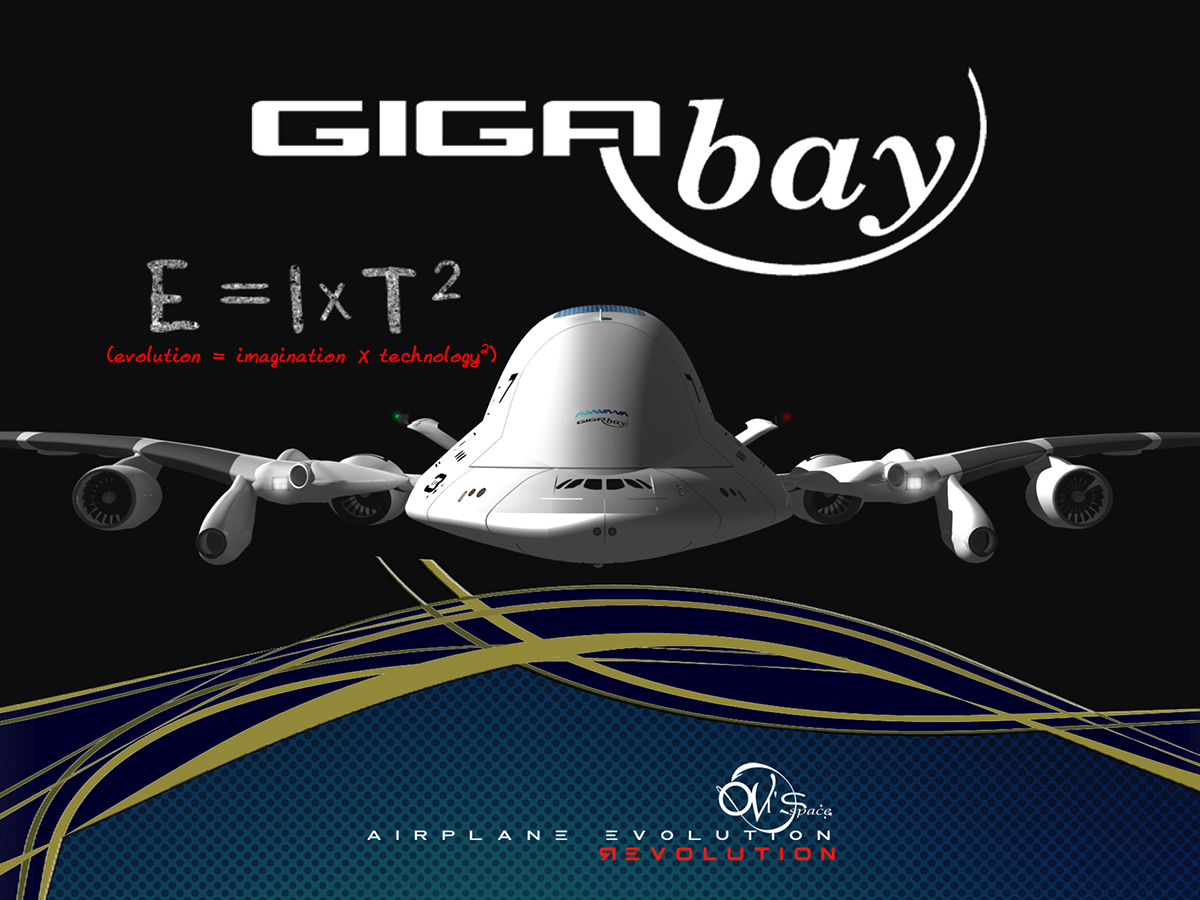
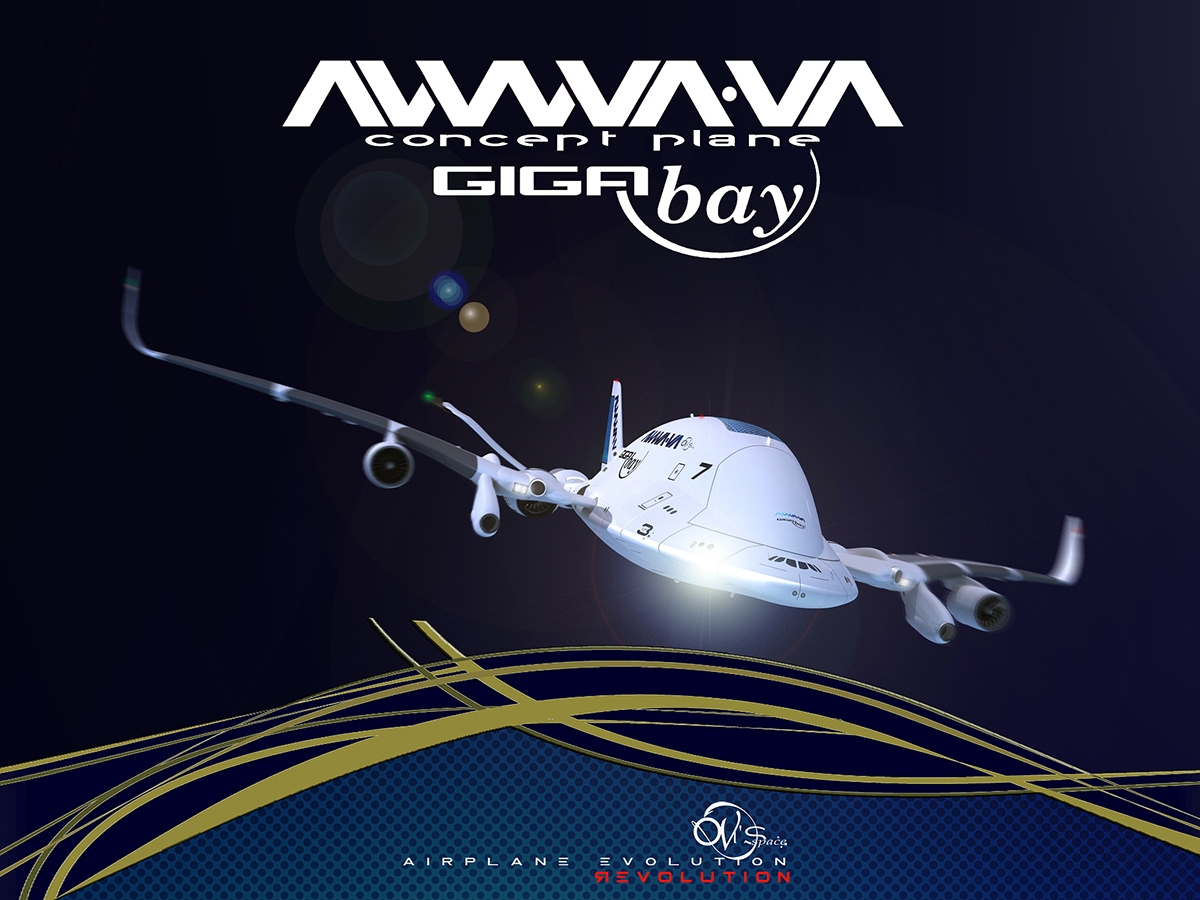
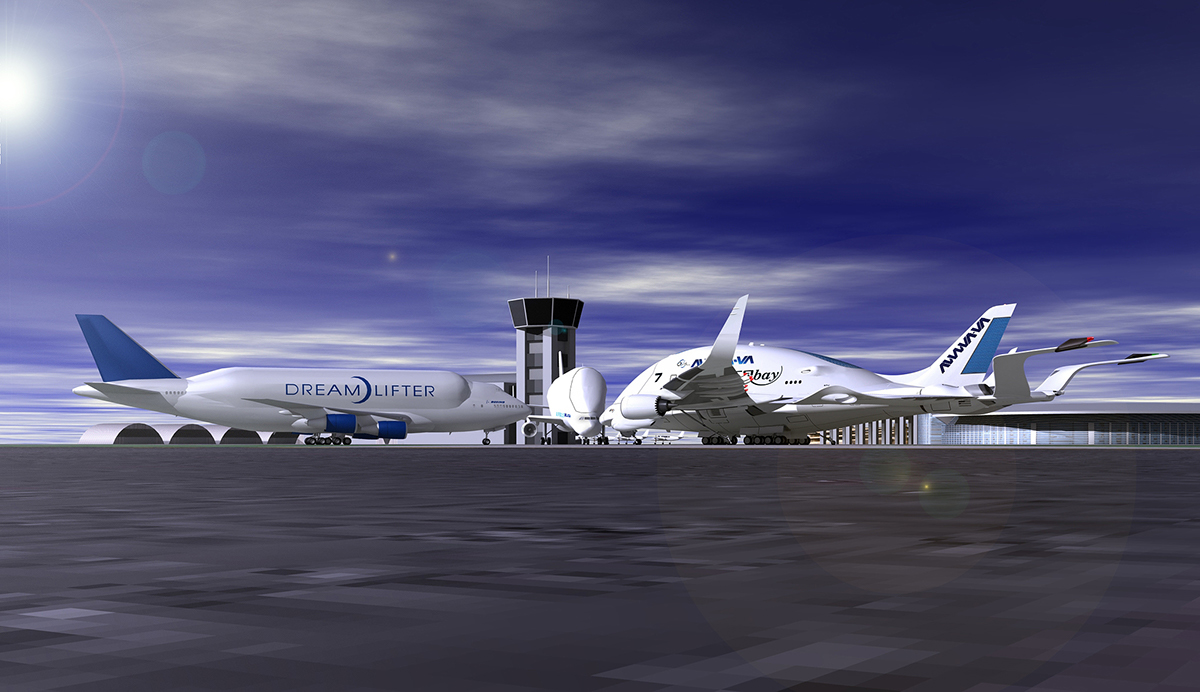
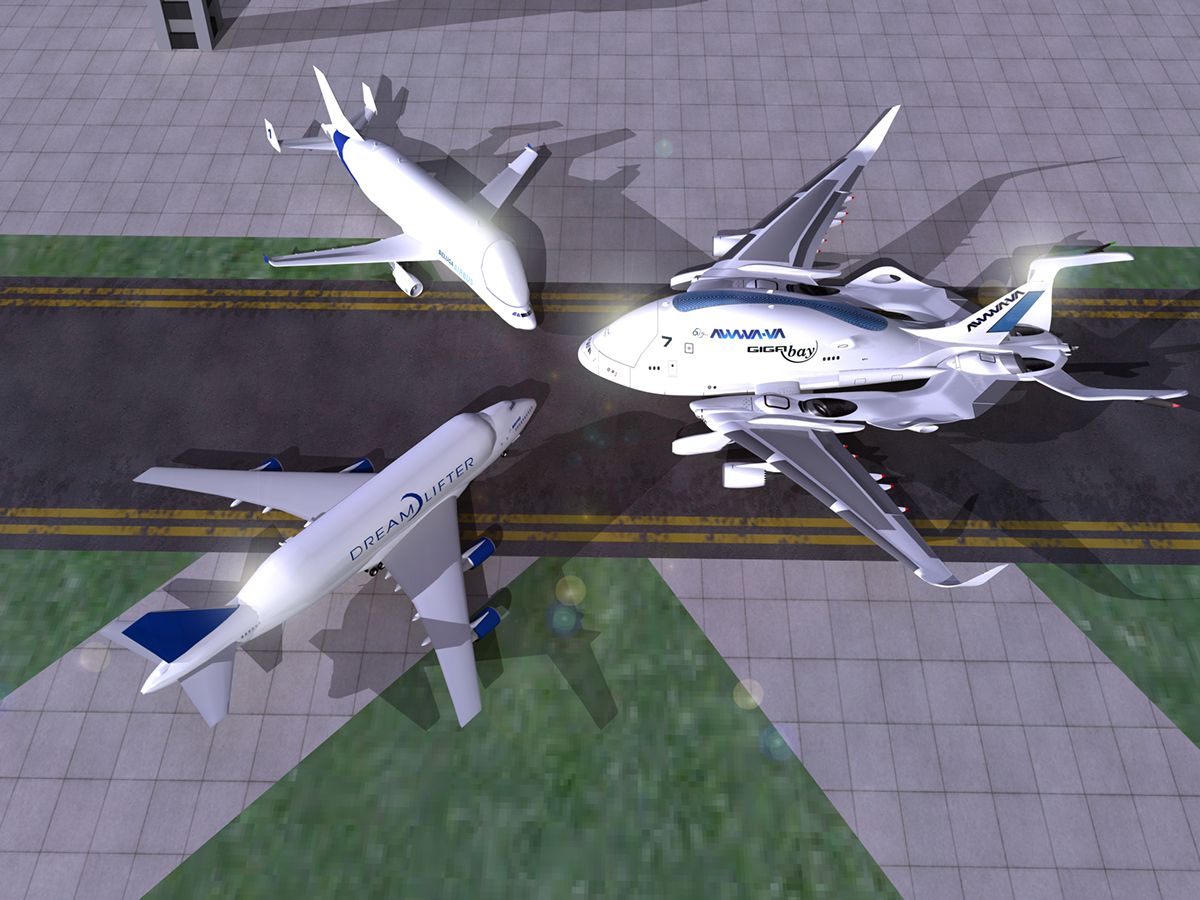
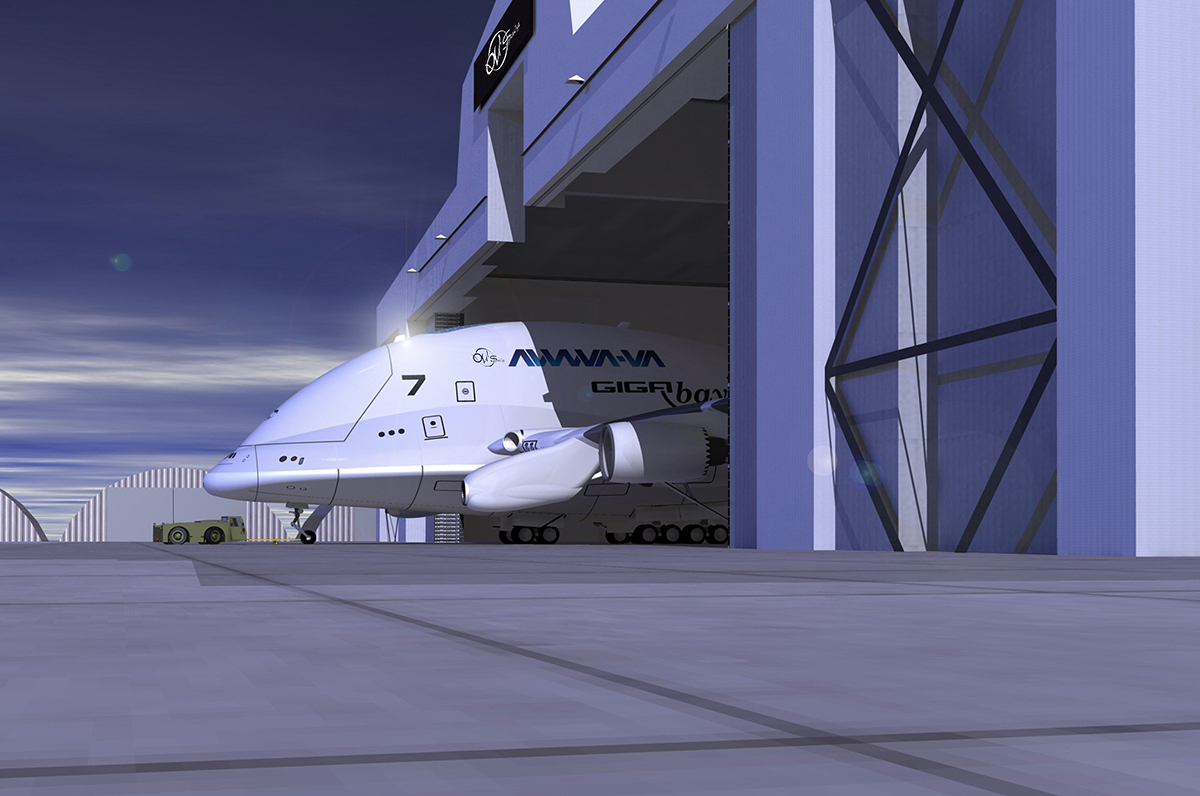
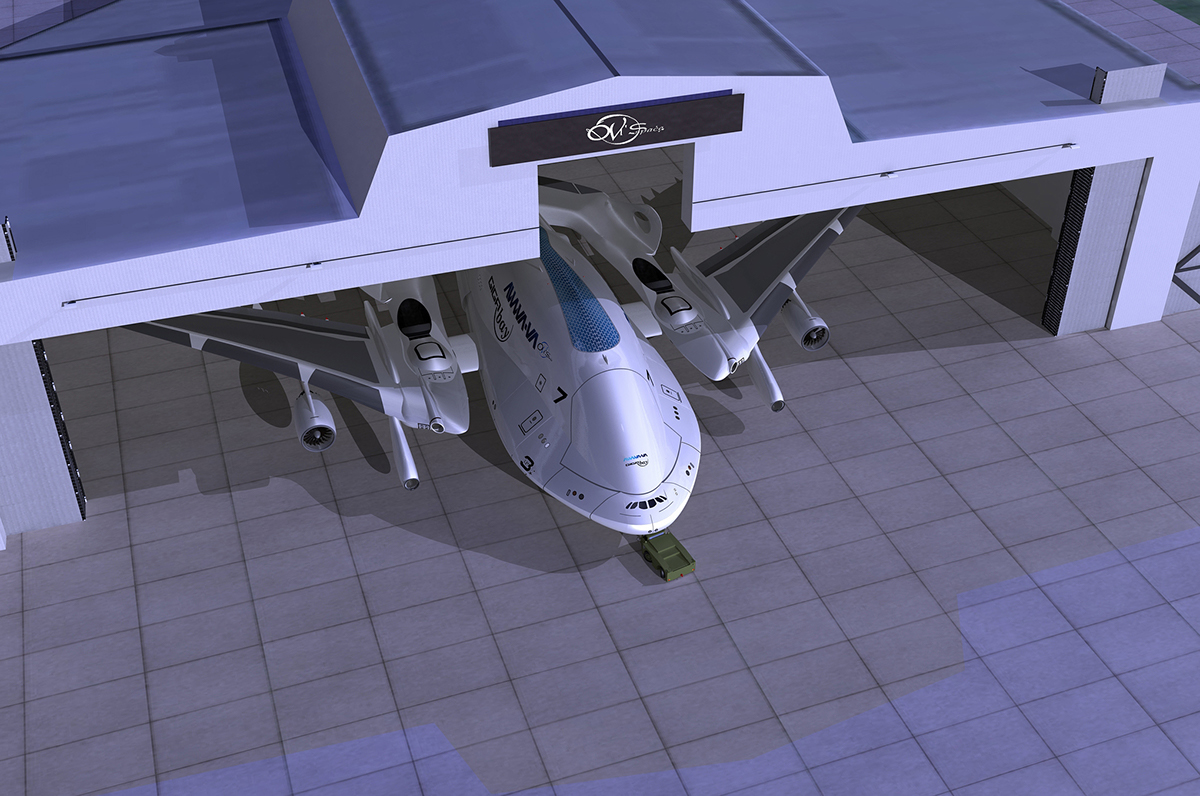
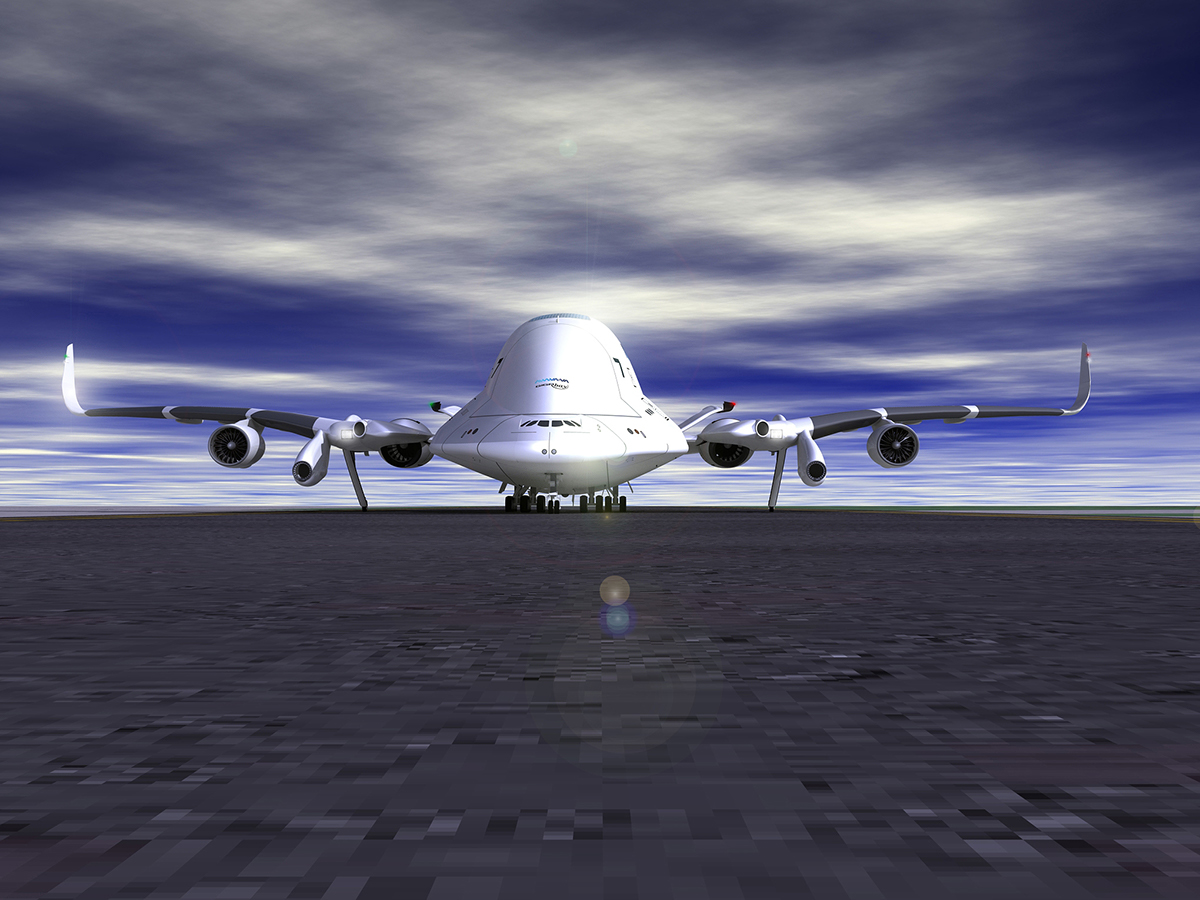
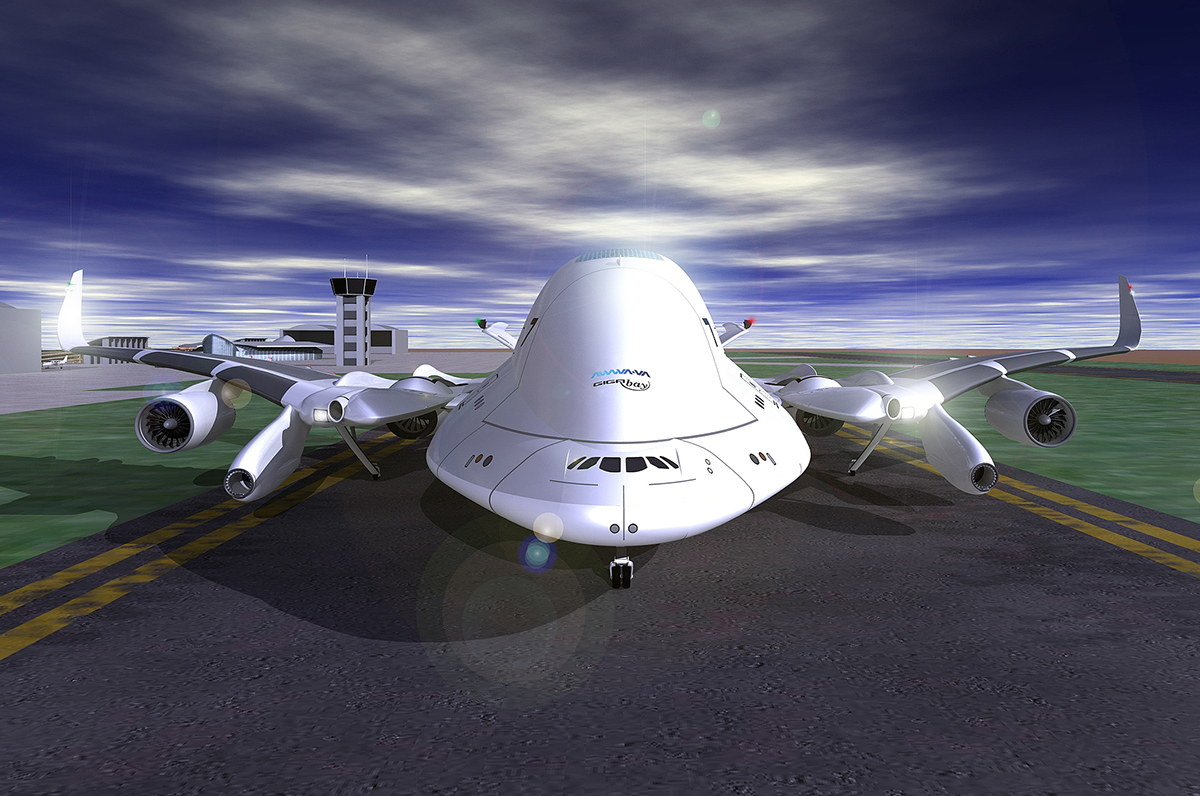
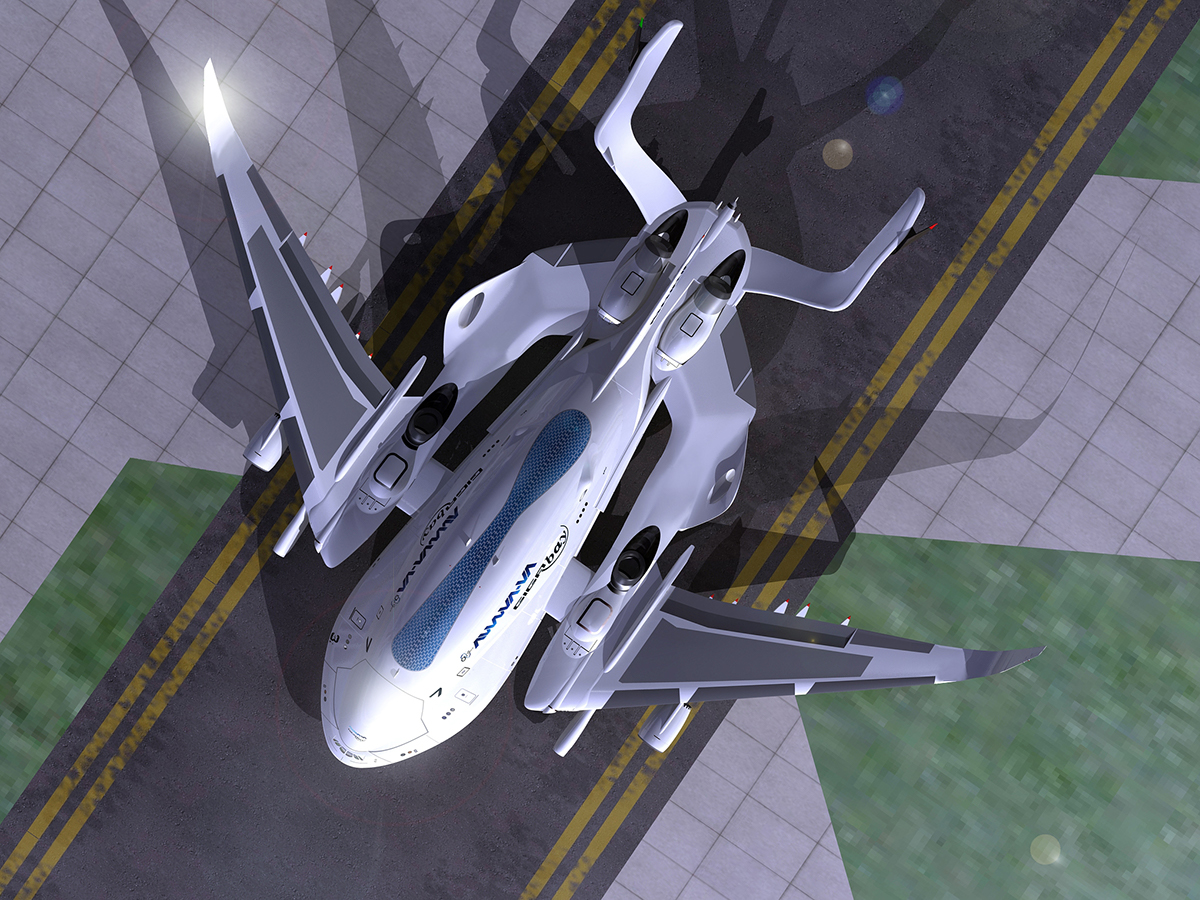
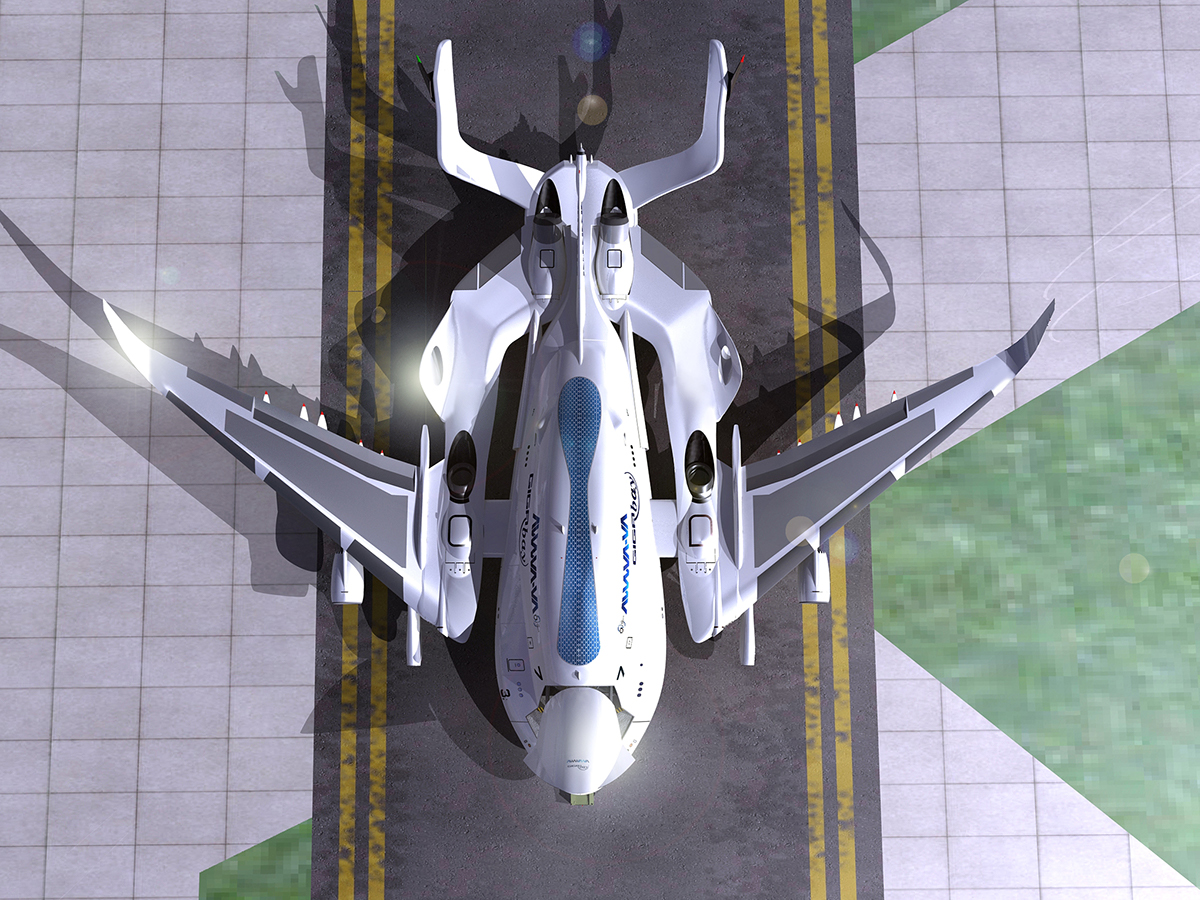
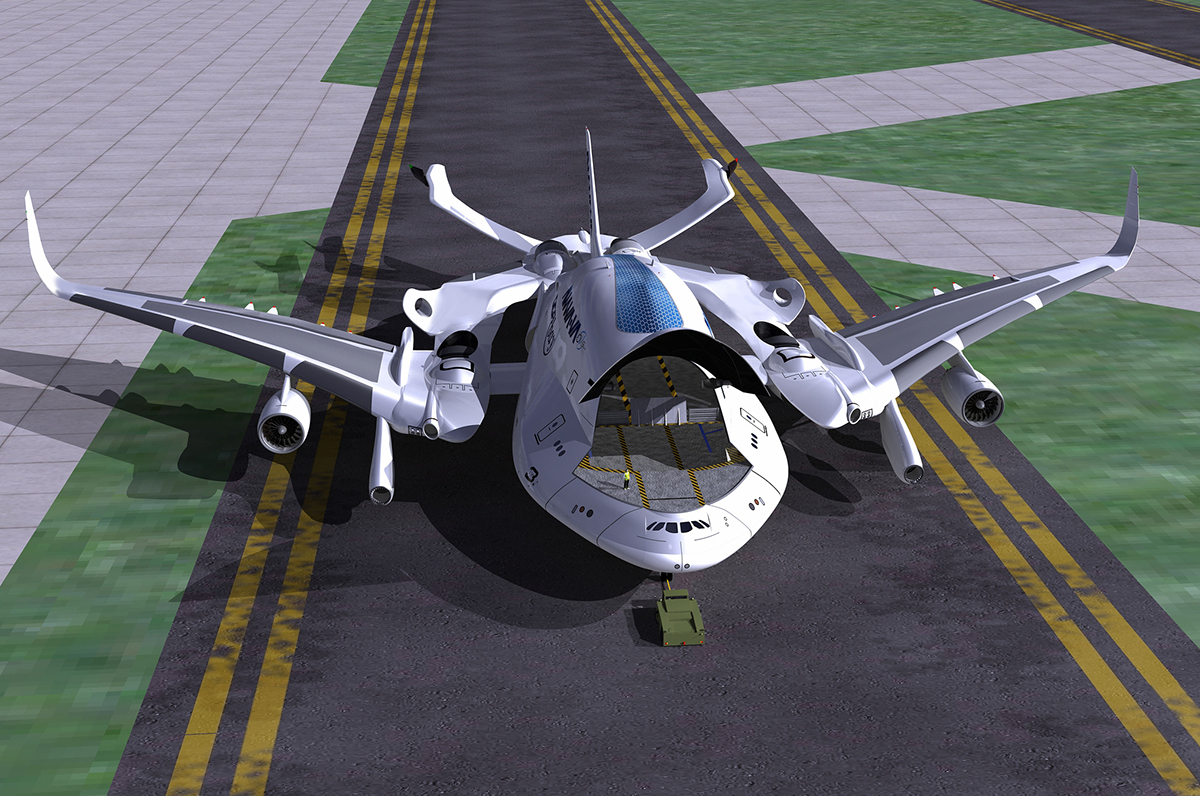
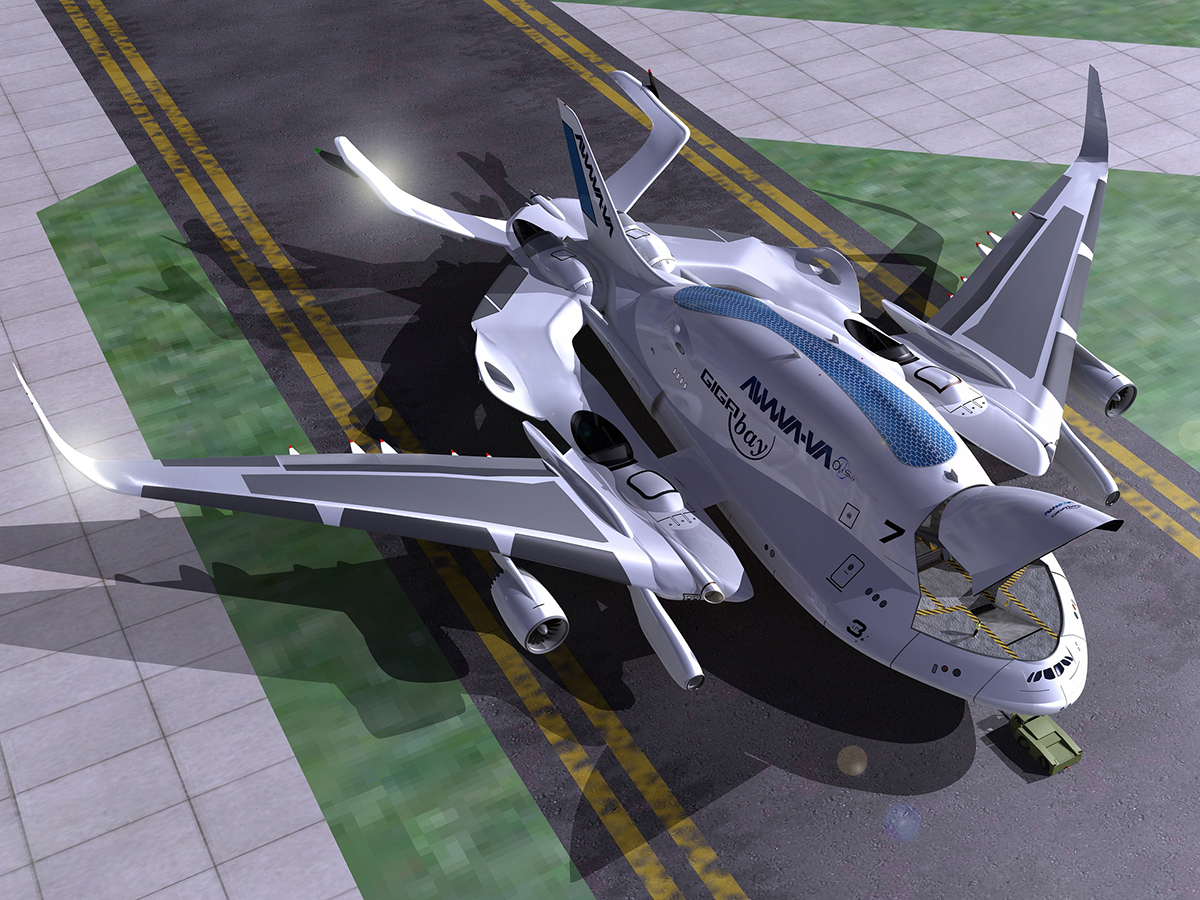
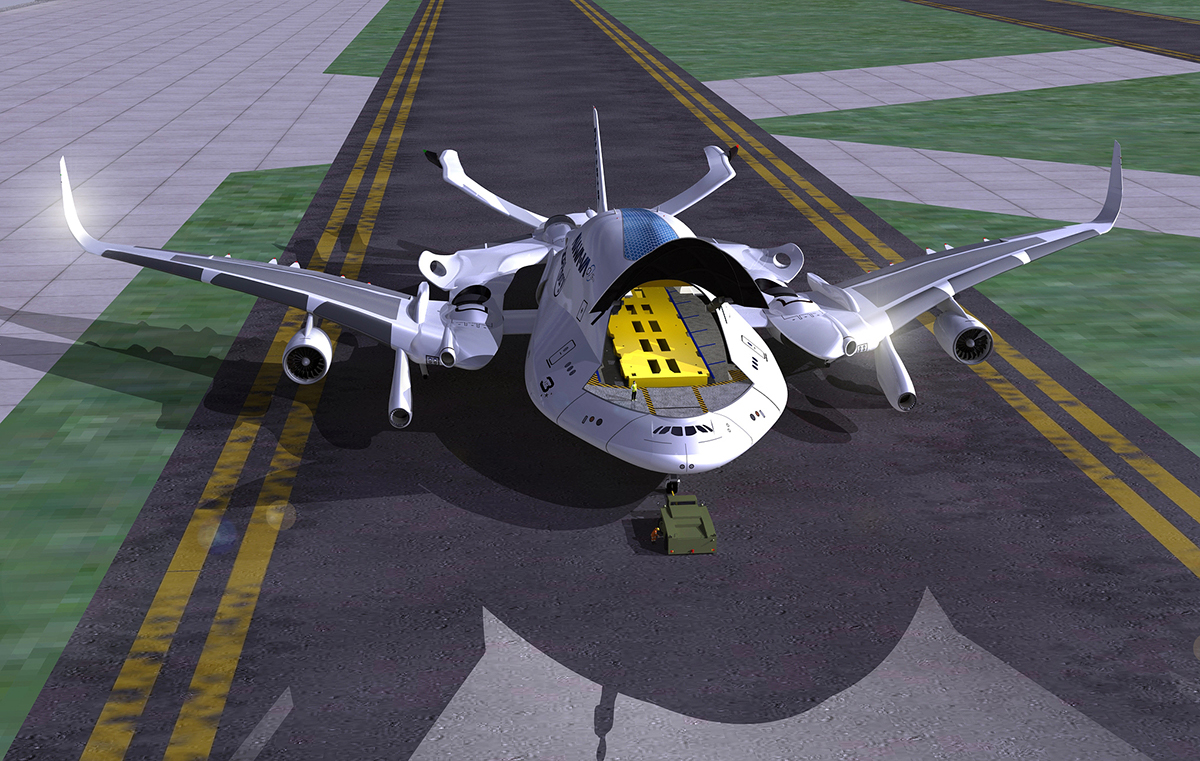
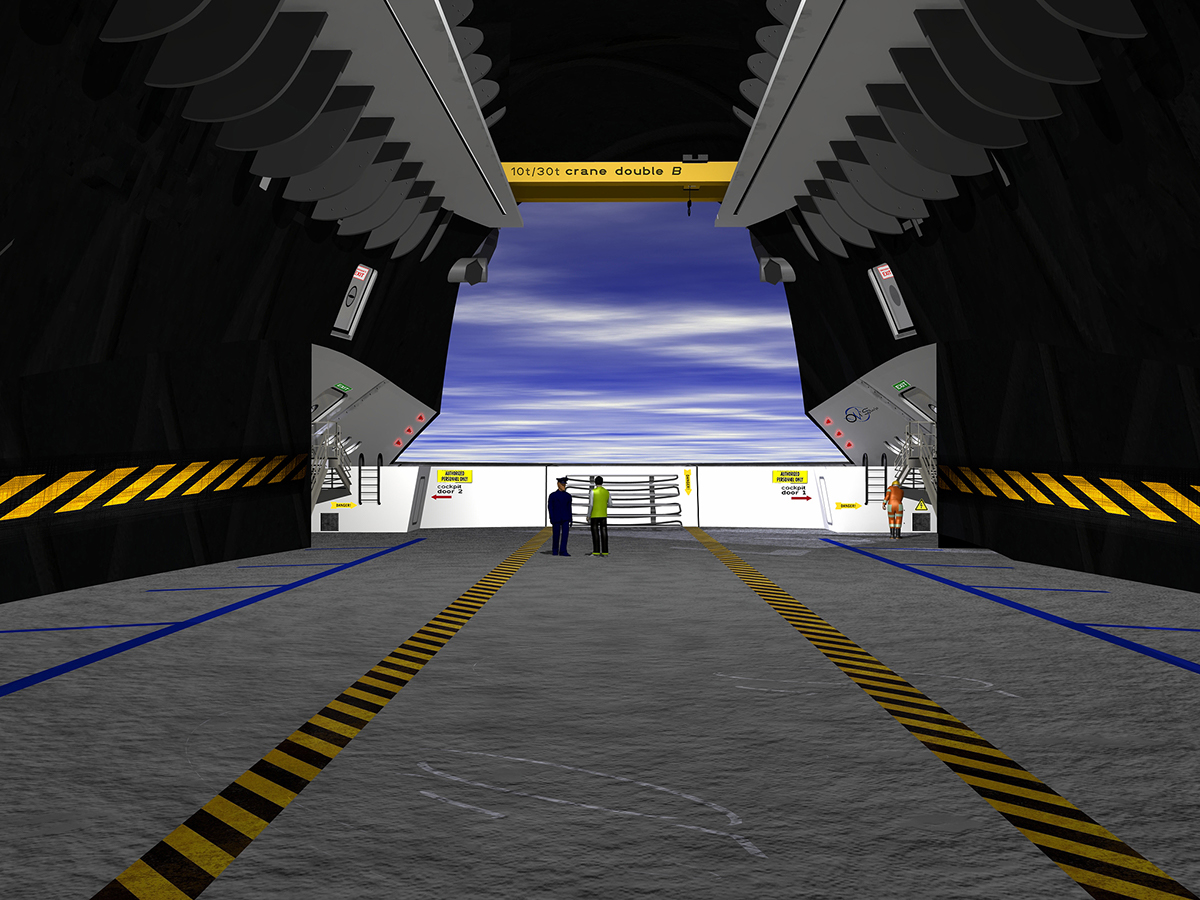
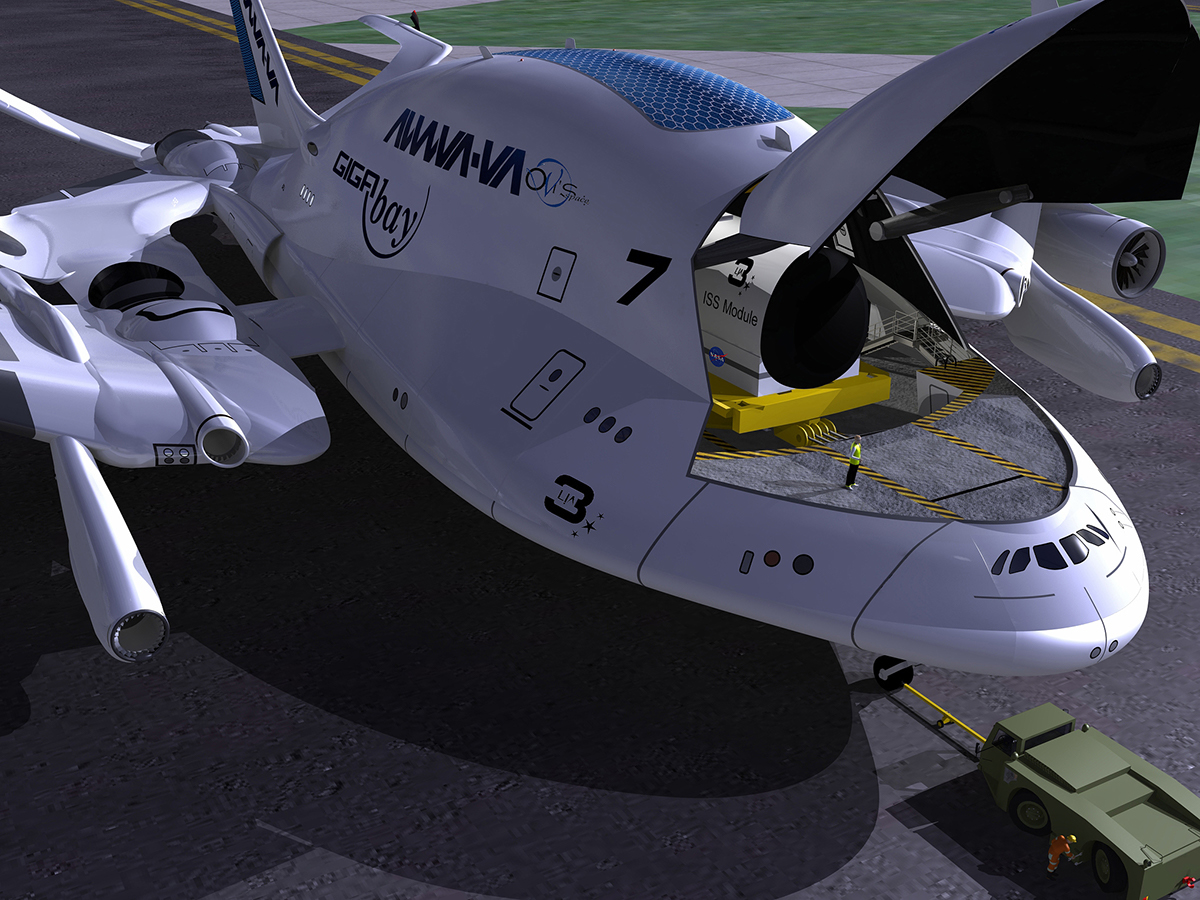

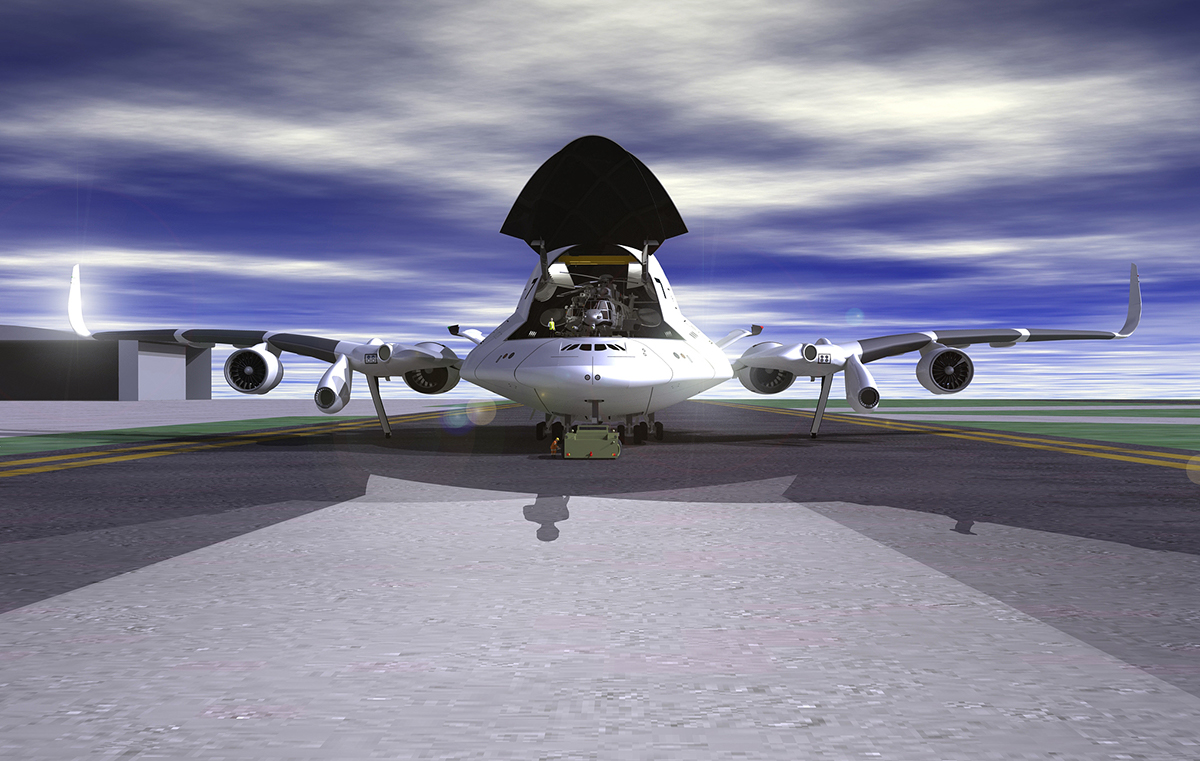
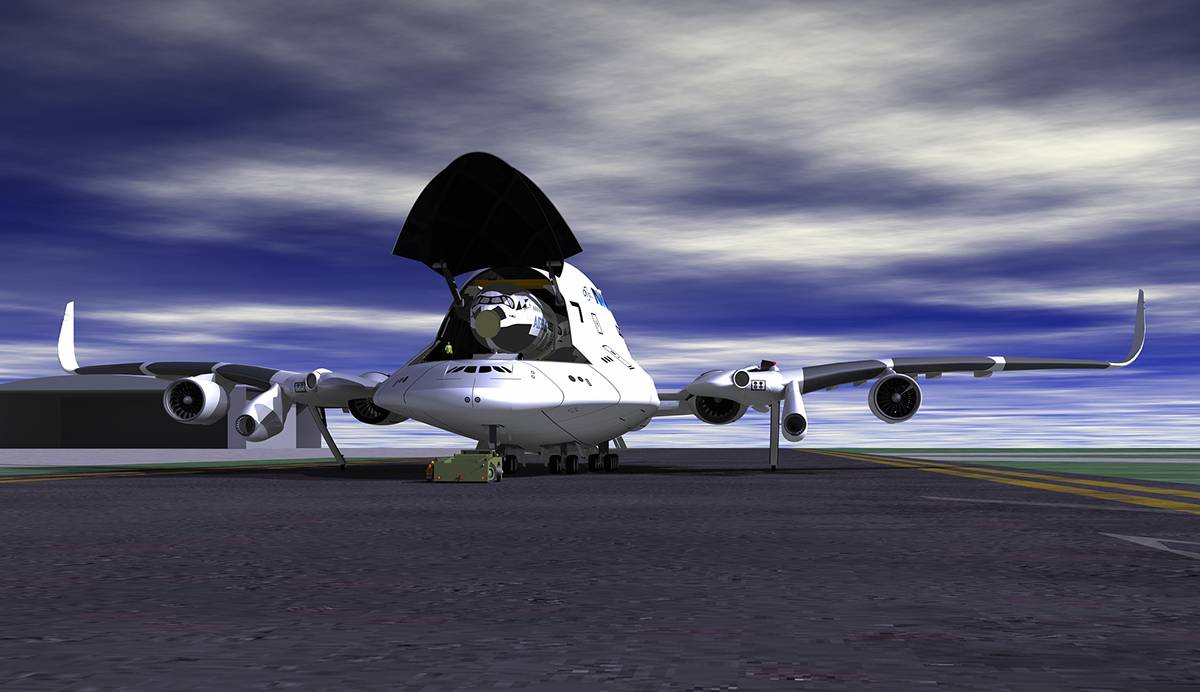
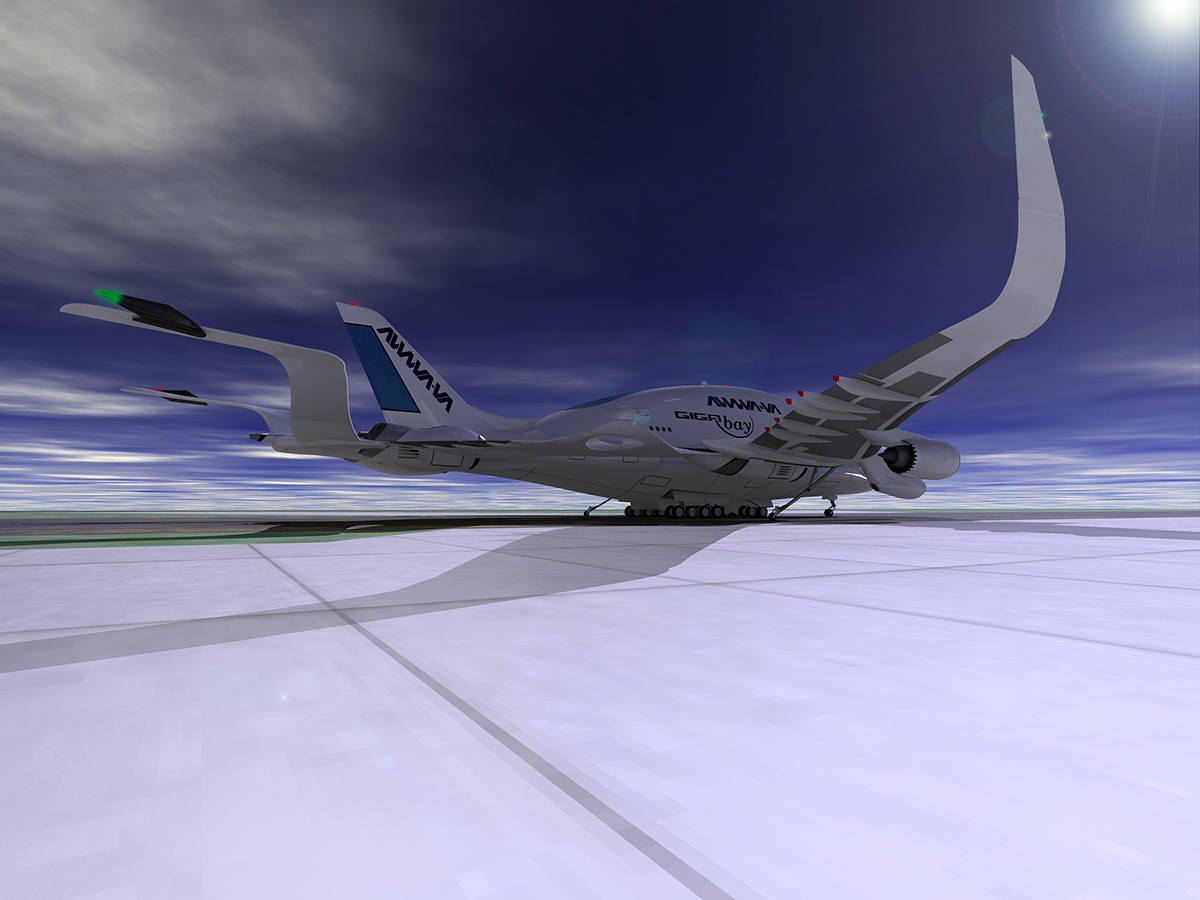
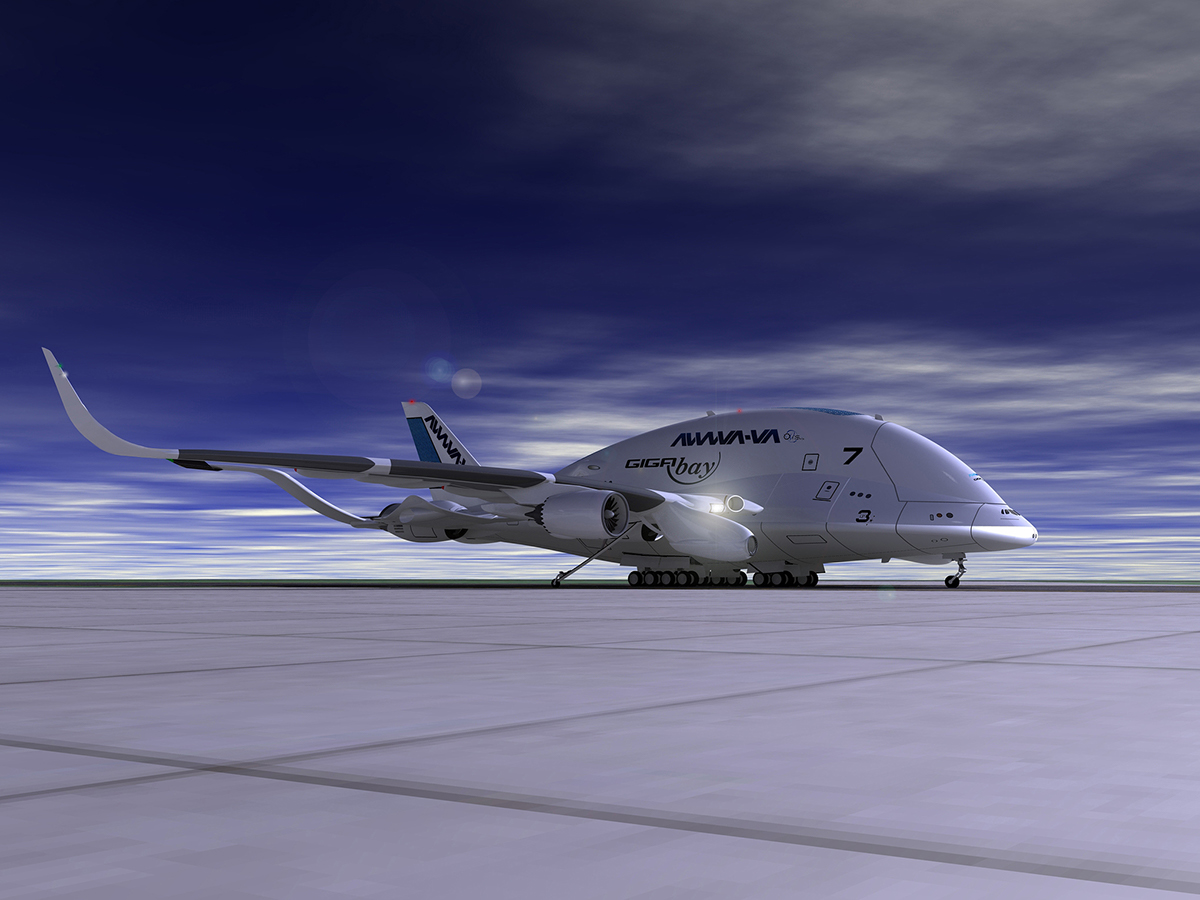
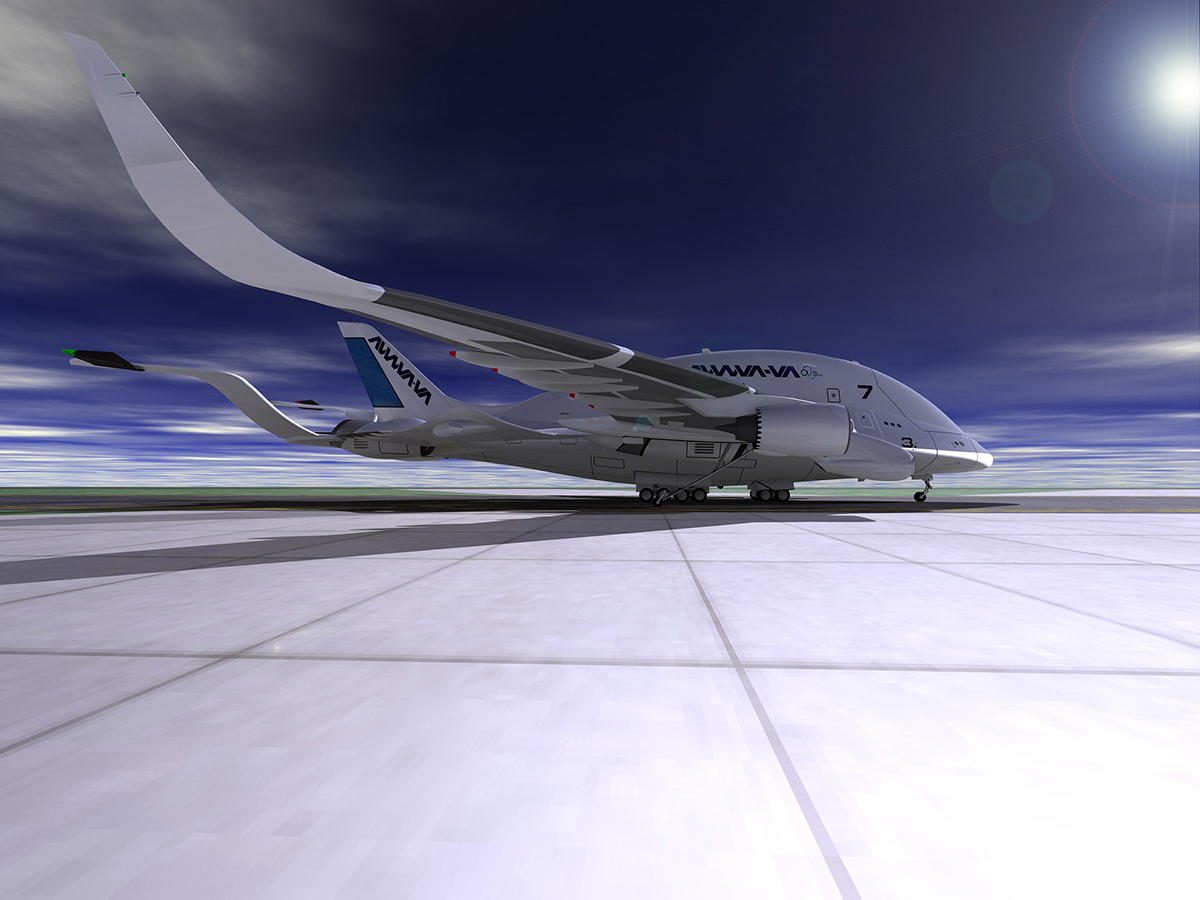
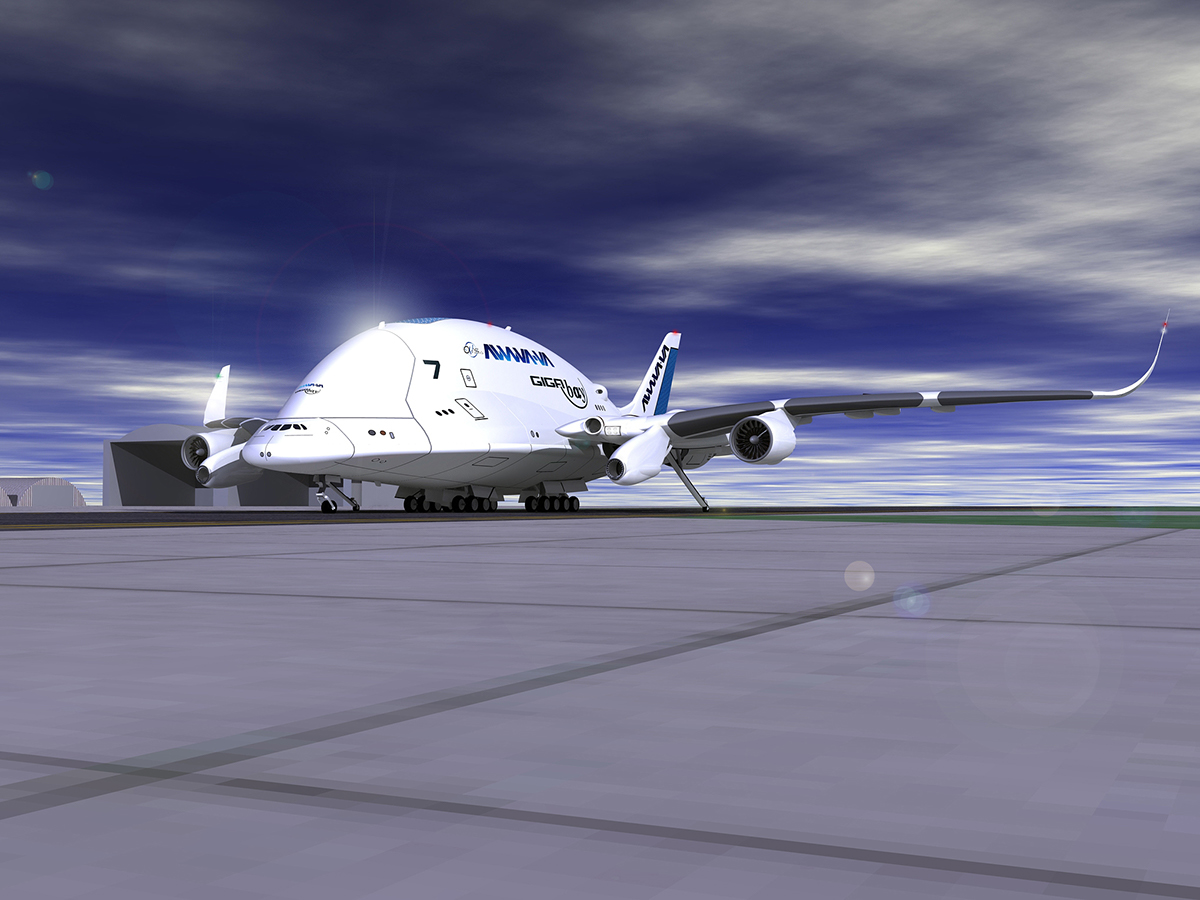
The airplane’s fuselage has a big size to have a maximum volume of cargo in order to transport components of big size, for example sections of commercial airplanes, like two Airbus A350 XWB’s sections or four EC-725 Super Puma copters. The cargo bay could have a volume of 2,303m3 and at depending on its configuration (Versatility) would have the cargo’s distribution in two decks, to carry up more than 220 tons. The bay could be equipped with a crane of double rail capable to move components up to 30 tons along all the cargo bay. Would be equipped with an adaptable and mobile platform to carry up the cargo.
To keep save the integrity of this “big structure” and no common fuselage with the constant changes of pressure over it when the airplane is flying, it could be equipped with an internal active sub-fuselage A.F.S. that distributes the pressure to obtain the best performance and prevents damages over the fuselage. The A.F.S. is composed with a fiber carbon structure with multiple mobile sections with hundreds of sensors all along and an electric air pumps system with two external air intake devices that inject or pull out air at high pressure; the A.F.S. readapts its form in this way, all controlled by various computers that analyze every millisecond the situation.
The airplane can “breath”.
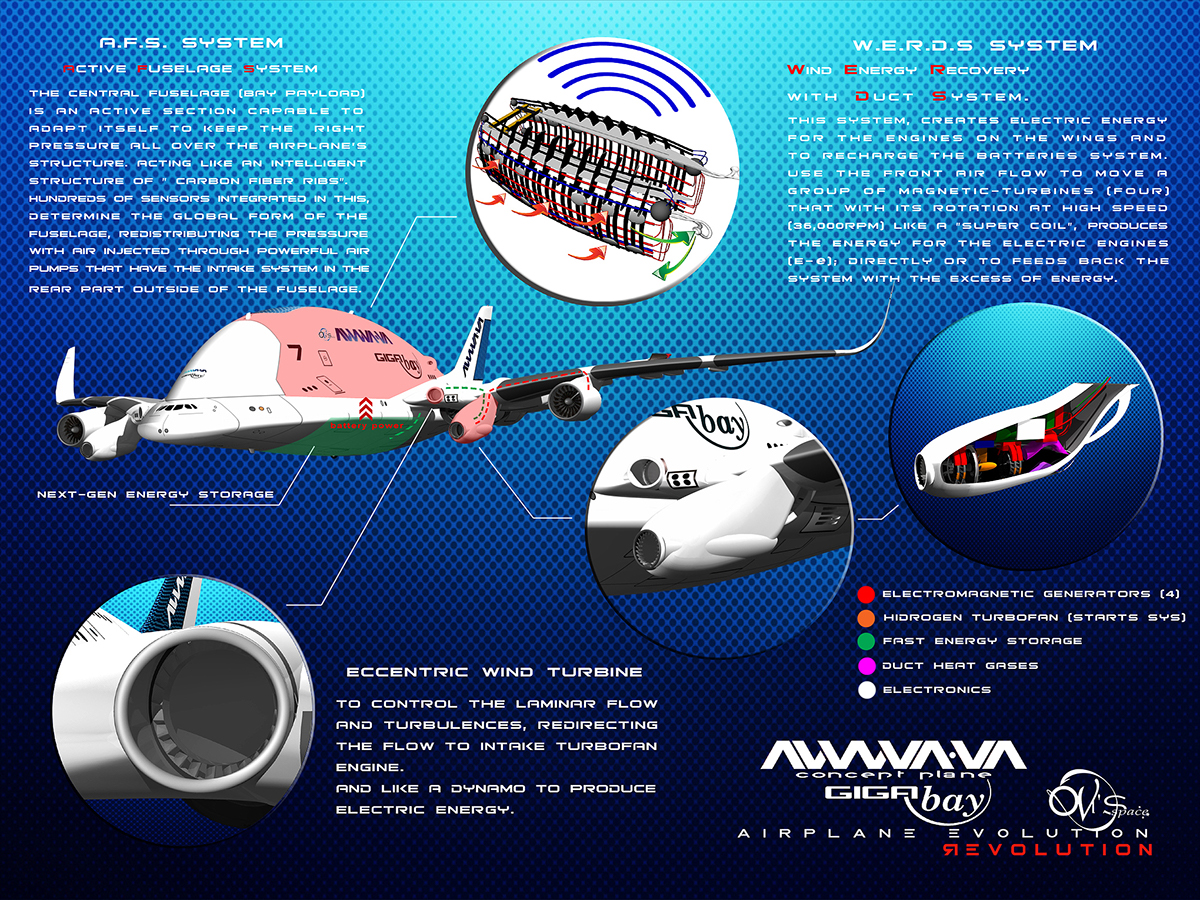


Take-off in semi-VTOL maneuver

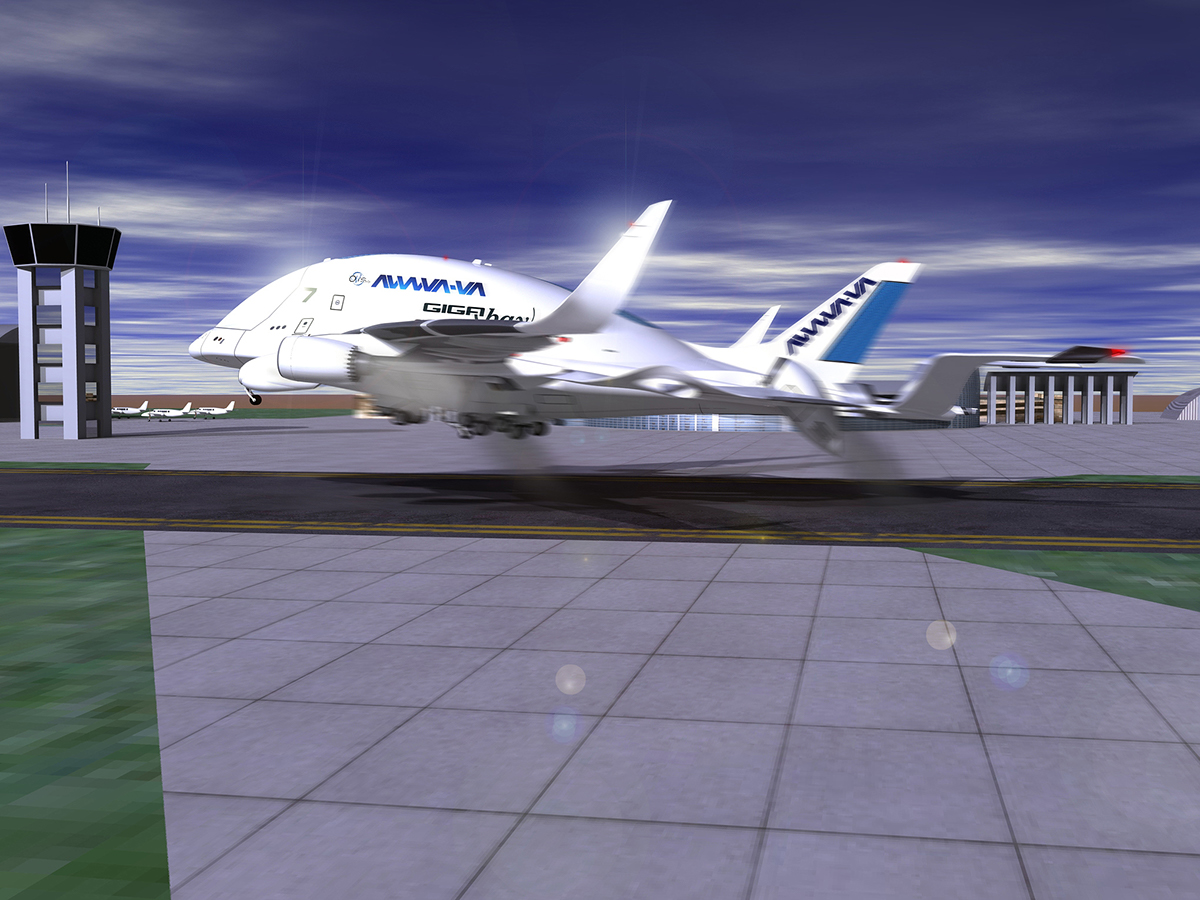
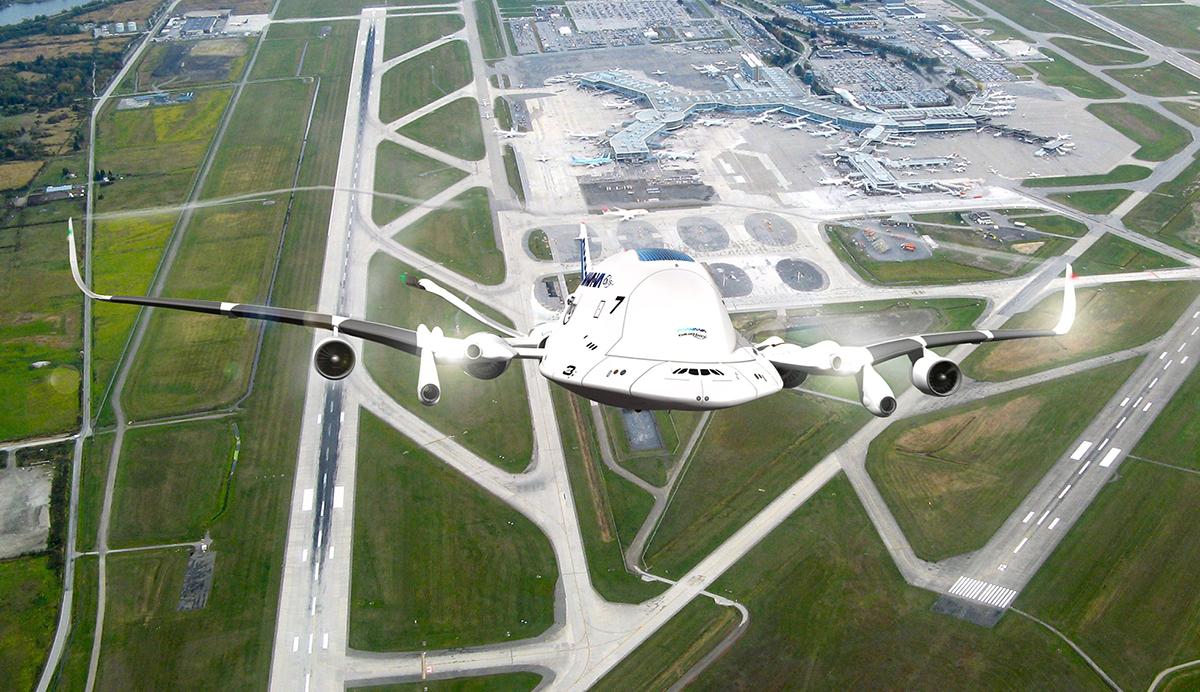
Vancouver International Airport Aerial photography by Alejandro Erickson

Vancouver International Airport Aerial photography by Alejandro Erickson
The airplane could be equipped with four Hybrid Engines –Fuel Electric- (hybrid turbo-electric propulsion system) the engines could use both fuel to burn in the engine's core, and electricity to turn the turbofan when the core is powered down. The Hybrid engines could rotate up to 45 degrees in vertical position to assist in the take-off and landing maneuvers (VA -Versatile Alliance System- ), reducing substantially the distance of track to do this actions and like a support in adverse circumstances . All controlled with avionic systems and fly by wire system that is assisted with active sensors located through all the plane’s surface. Two E-engines (Electric power only) over the wings which together with the powerful electromagnetic generators (W.E.R.D.S.) provide of electric energy directly to engines and recharge the batteries’ plane . The W.E.R.D.S. (Wind Energy Recovery Duct System) use four superconductor turbines, boosted with the air flow and when the plane starts the system, use an inside turbofan boosted for a fuel cell stack (Hydrogen) to move only two superconductor turbines to generate the necessary power for E-engines on the take-off maneuver. When the airplane is flying the system feeds back.
To keep a low center of masses and well-adjusted, the storage batteries, Hydrogen and Fuel are located under the cargo bay section and wings.
One of the best aspects of this plane is its versatility, could be an advanced Mobile Hospital like a quick assistance in for example natural disaster that will affect any location around the world.
The Mobile Hospital could be equipped with operating rooms, intensive care units, laboratory, inside elevator for litters, little rooms for patients (100-150), and more…; all distributed in three floors. This airplane would have an extensible “Special Crane” capable to open an inflatable tent (campaign’s Hospital) in the front part. The “Special Crane” could provide of water, electric power, communications, recycle the air and all that maybe necessary for the campaign’s Hospital and a maximum of three tents with a capacity for more than one thousand patients.
Others possible “morphing” could transform the airplane in a Space Launcher with an electro-magnetic catapult system (EMCAT) , a big water treatment plant or a very interest tool to “control” atmospheric phenomena (all projects are under “construction”).
The primary advantage of the design of the AWWA·VA “GIGAbay” is its ecofriendly aspect and as a second objective its capacity of transport and versatility at the same time. Thought-out for the future worldwide “green” air commerce; faster, big sizes & heavy transport, anywhere & anytime, with the latest building materials technology, safe, high performance and integration of green power in an “intelligent machine”.
In a near future, when we’ll be looking to the skies, we will see the “GIGAbay” leaving behind only water trails from its green engines, and this is the final purpose… to descend at maximum the damaging emissions.
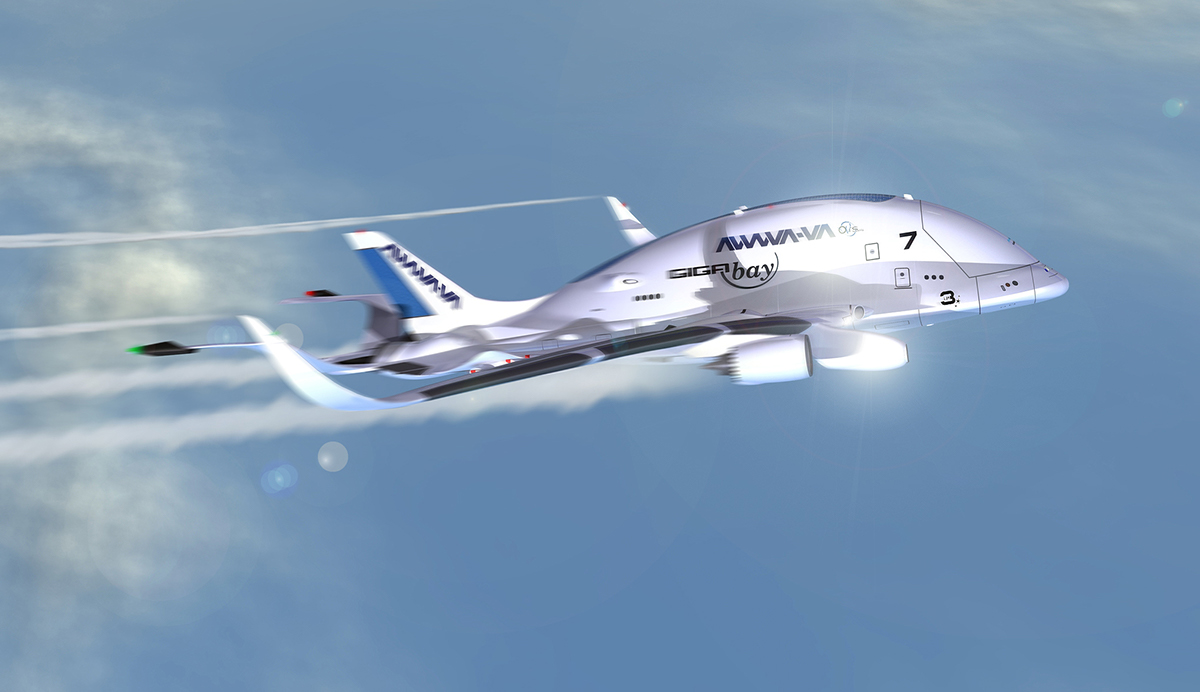
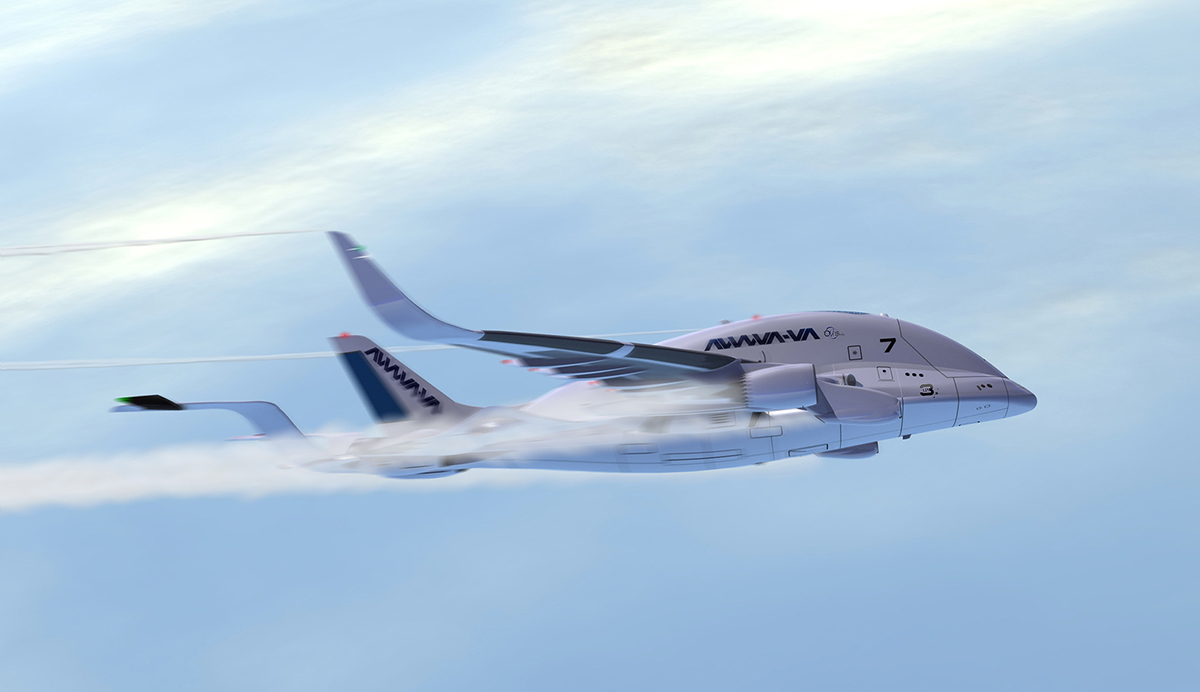
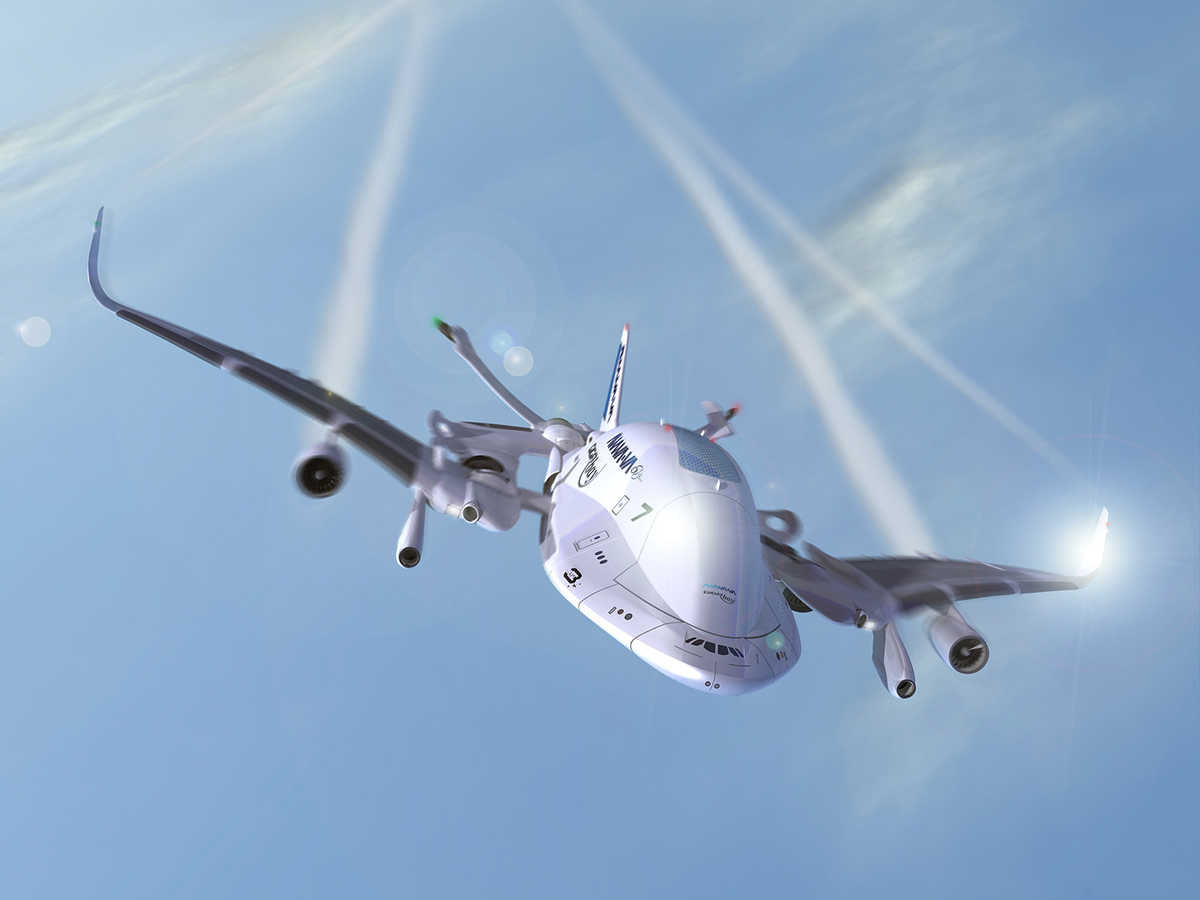
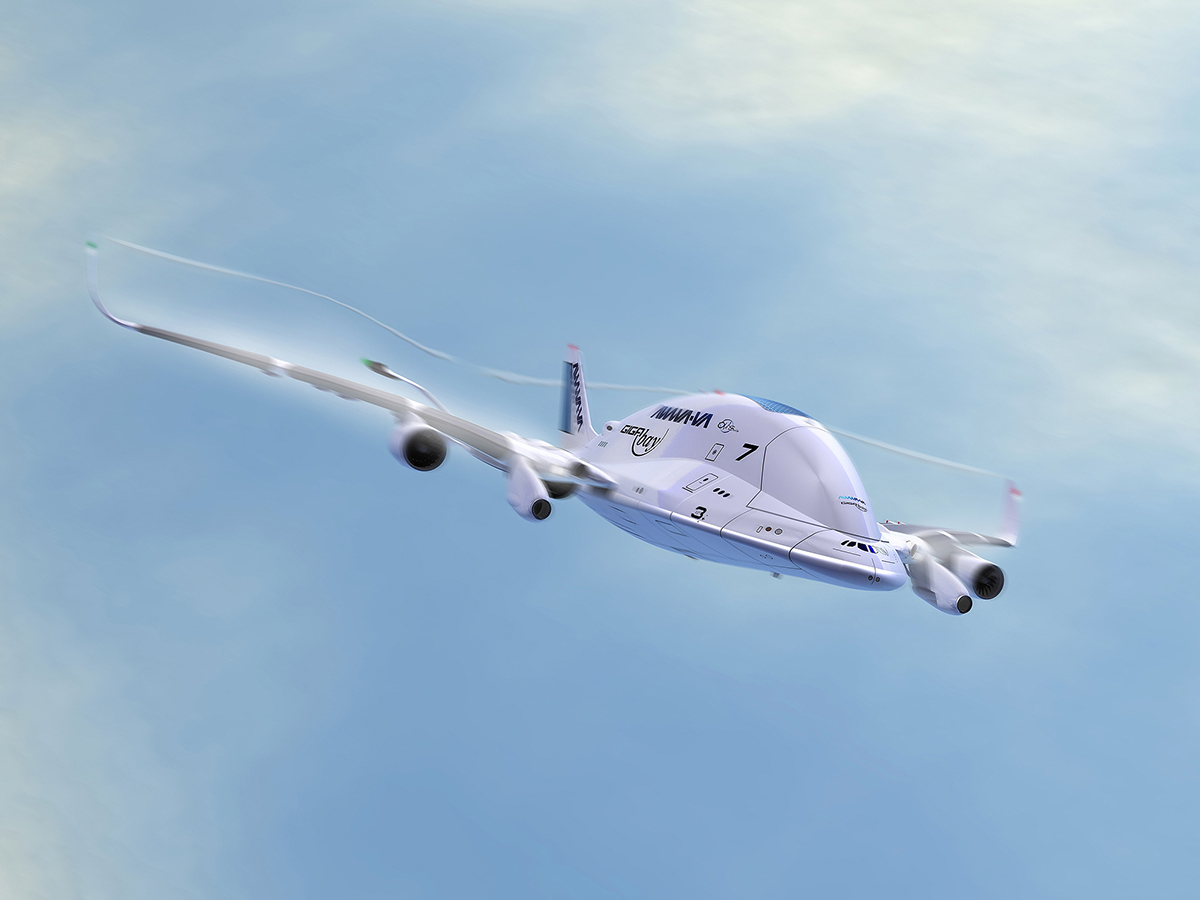
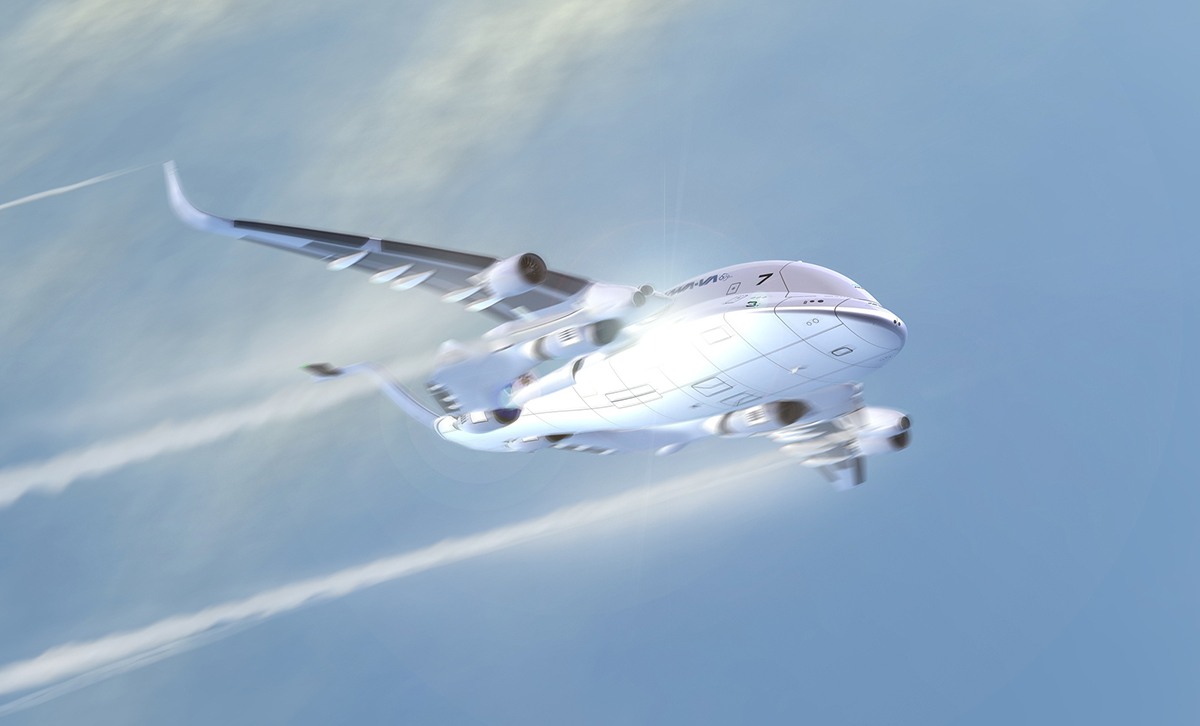

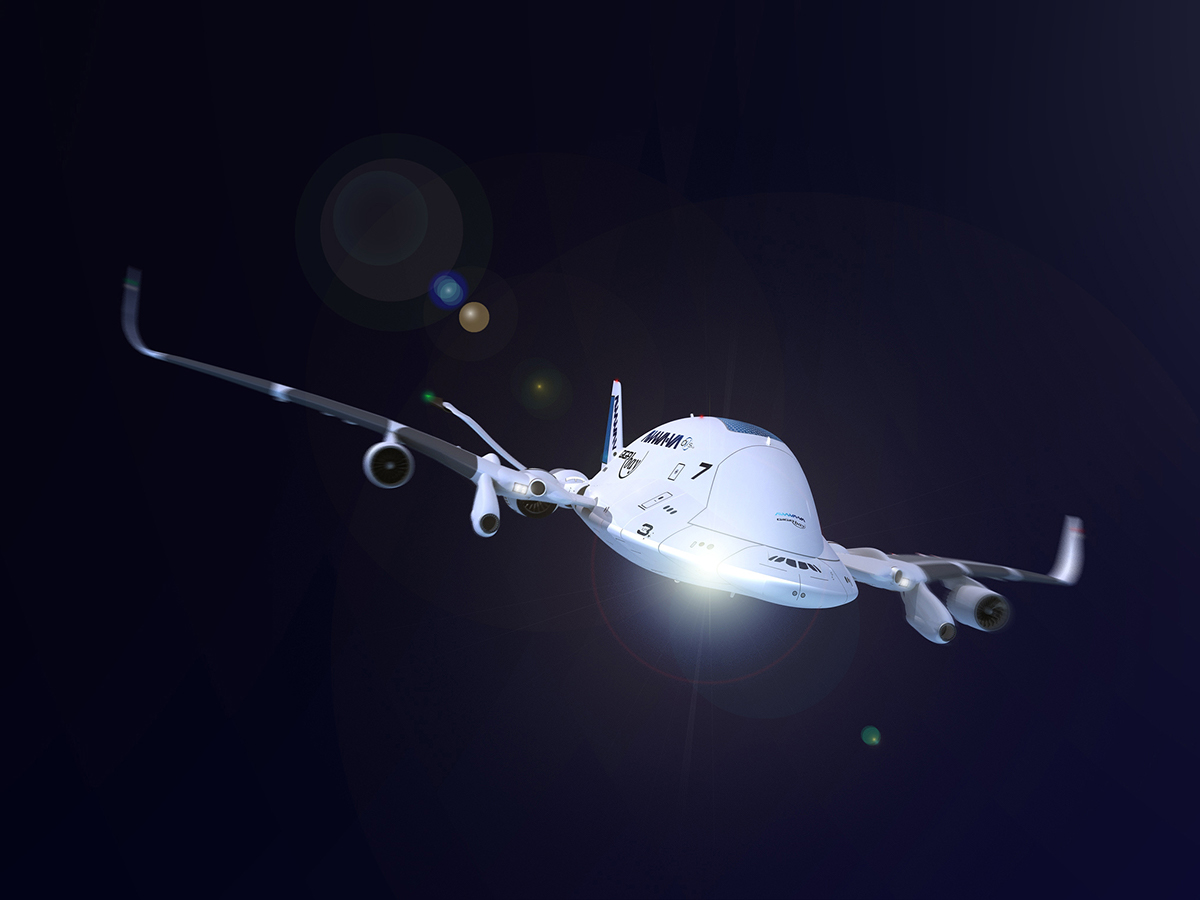
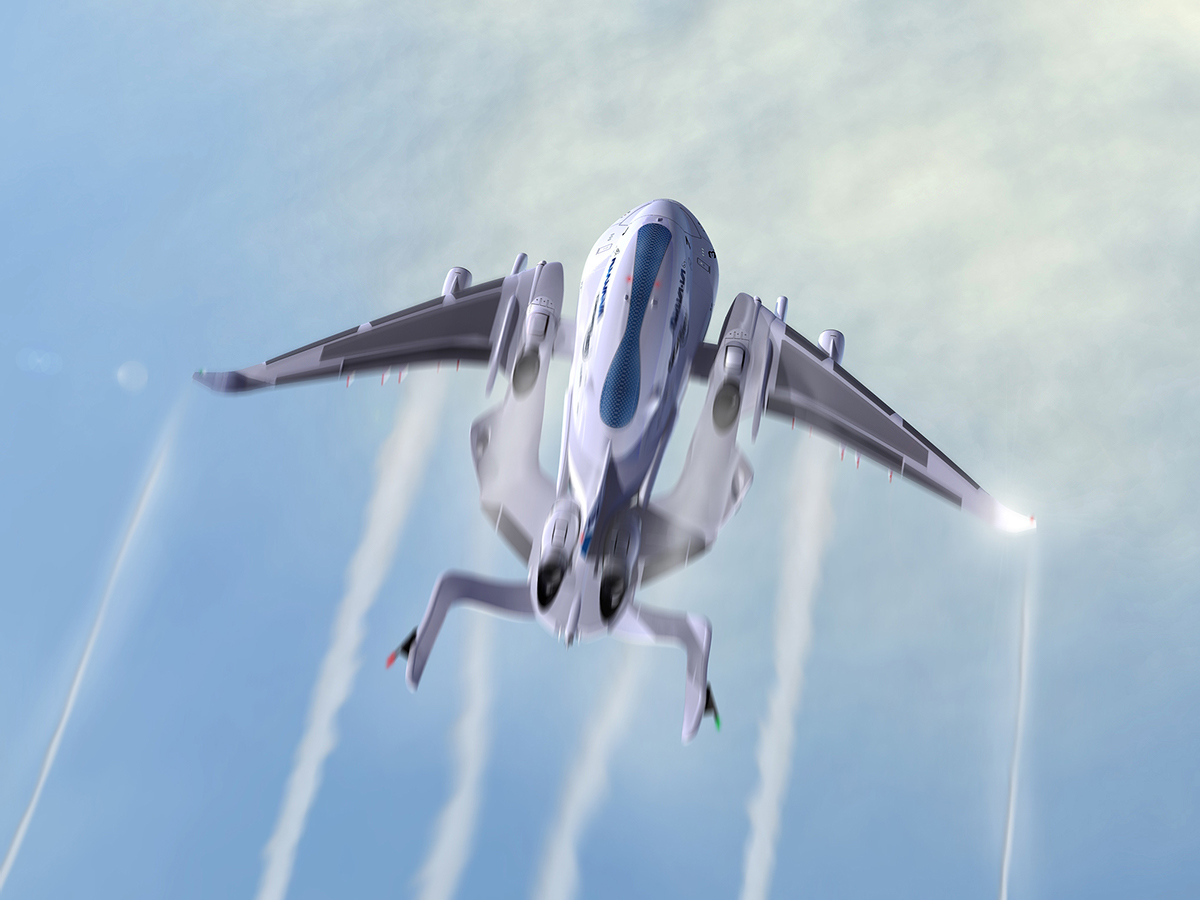
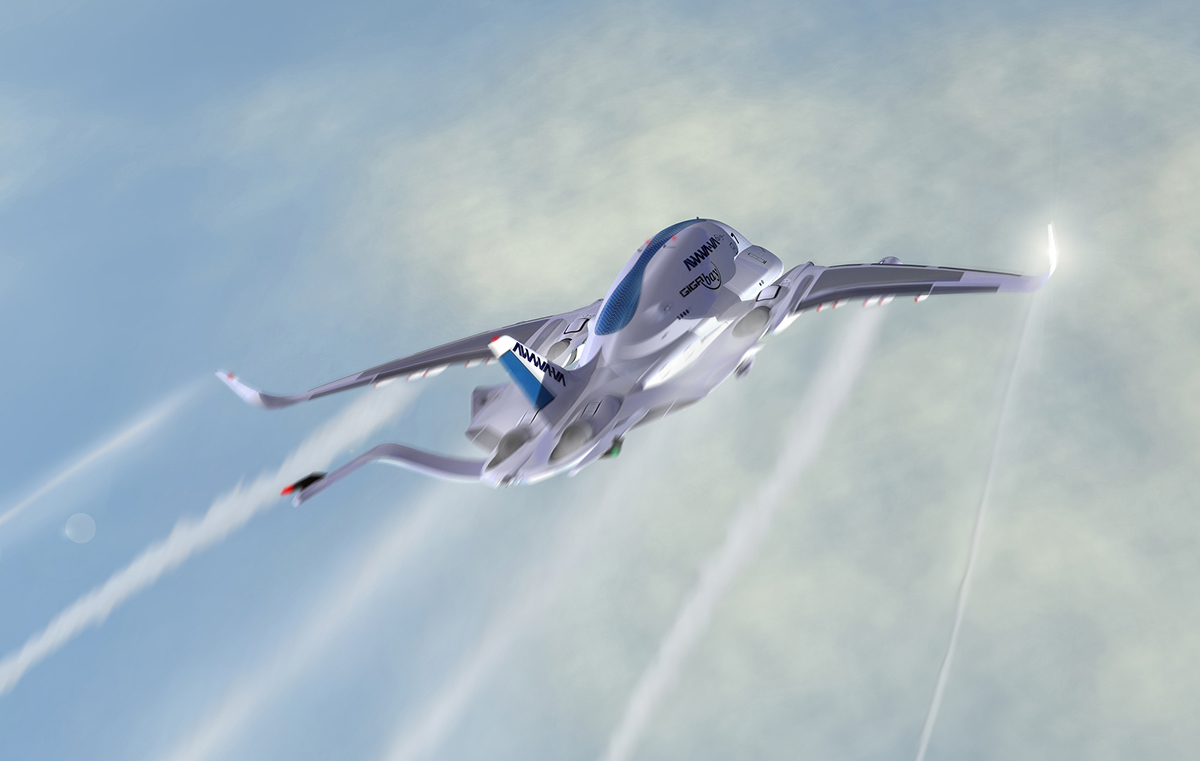
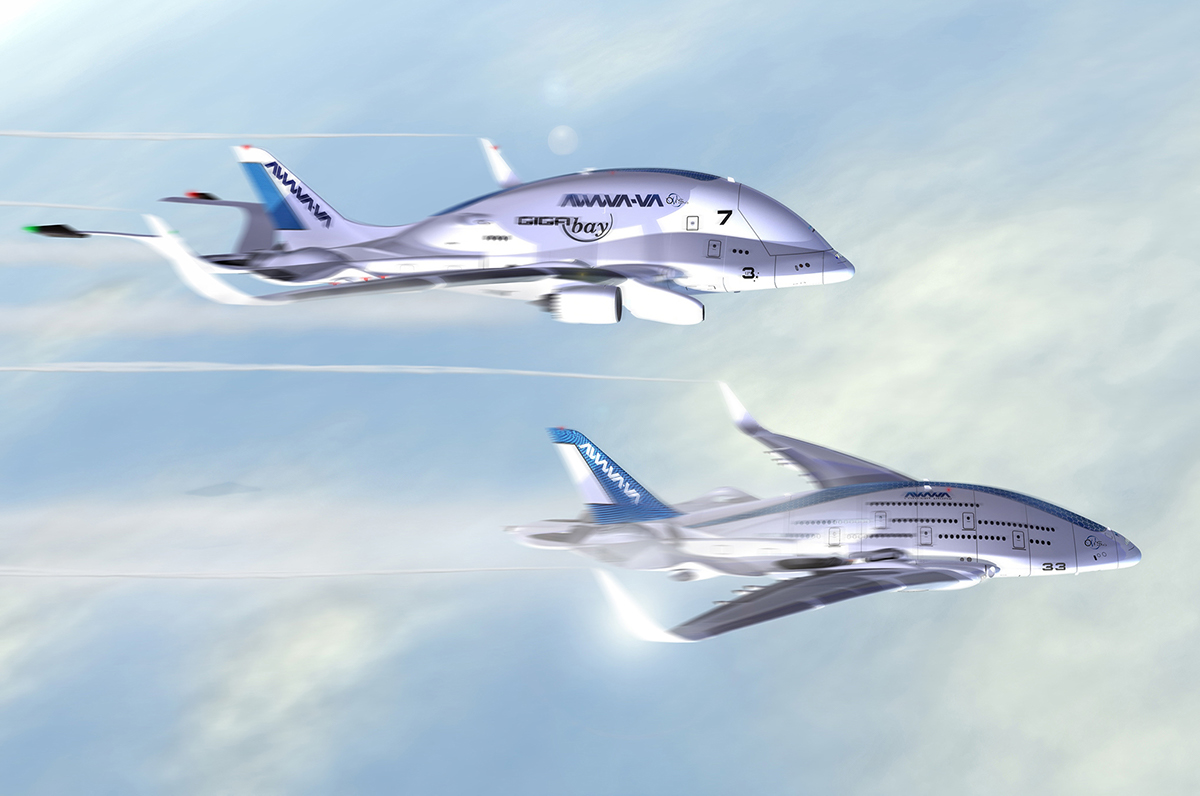
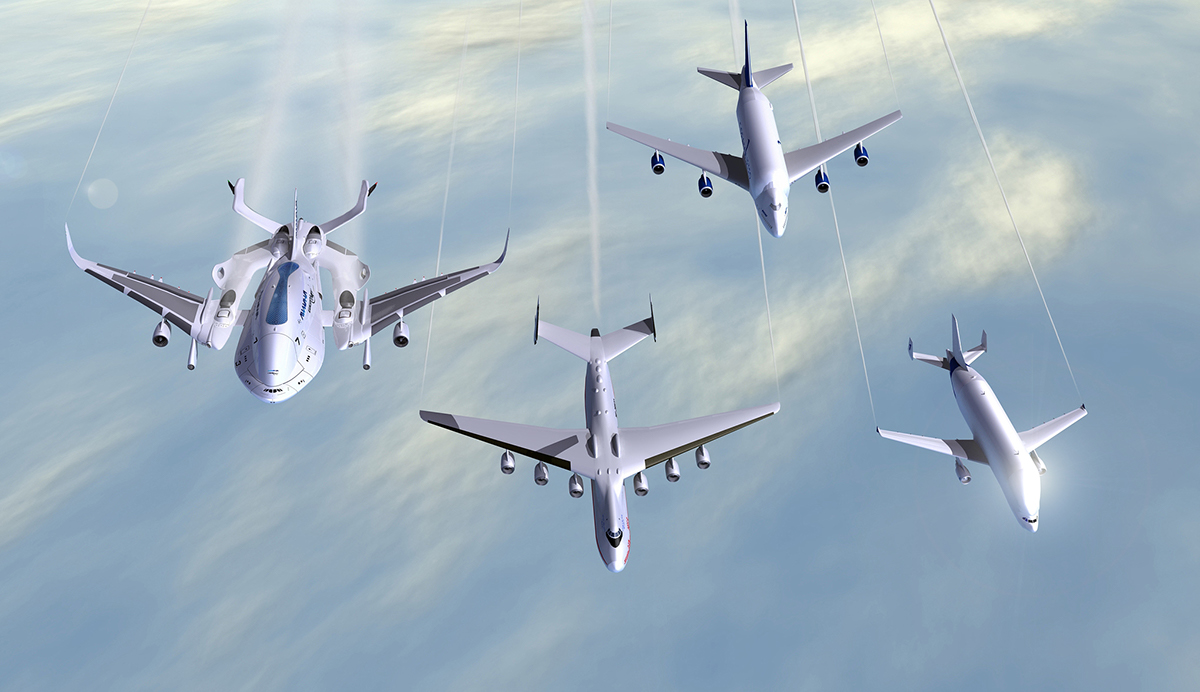
Landing
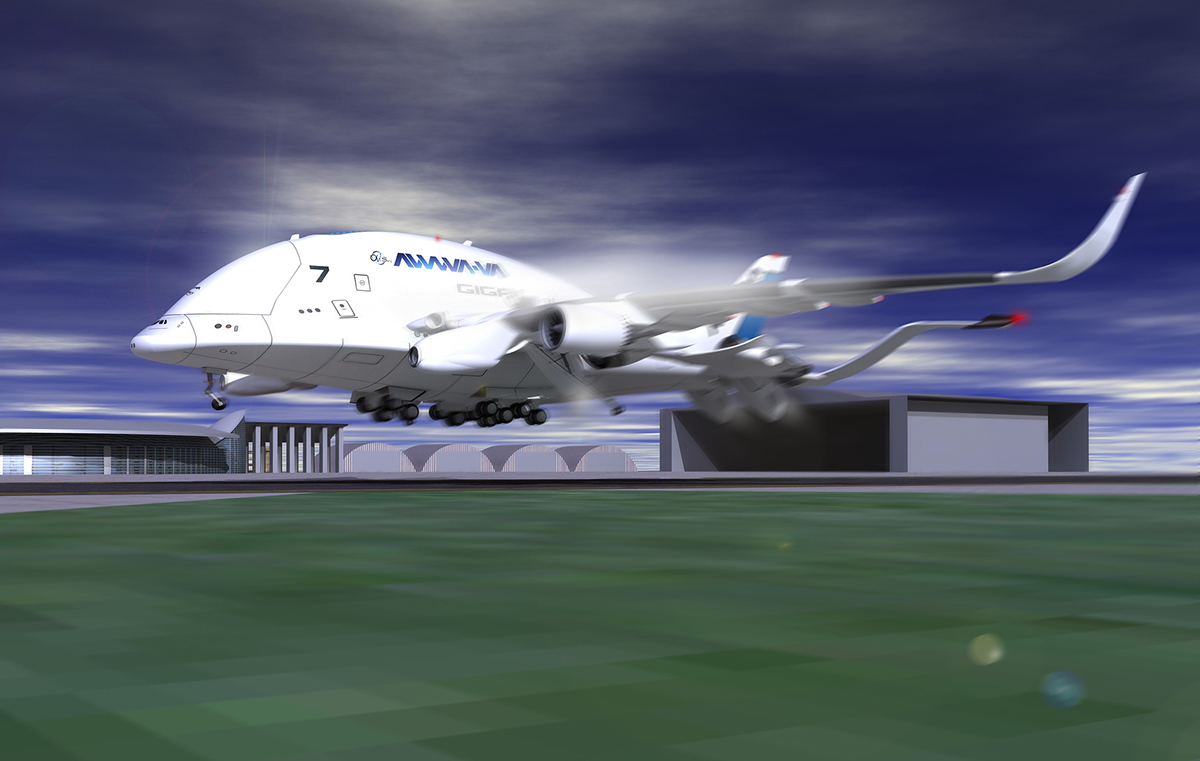
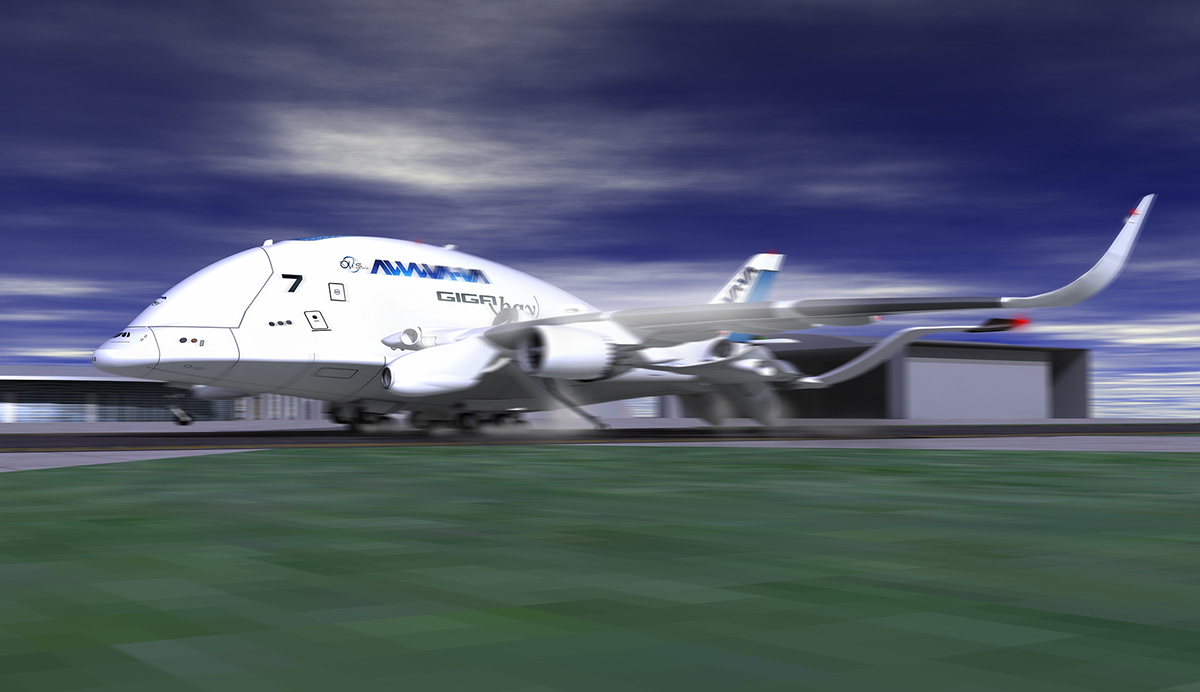


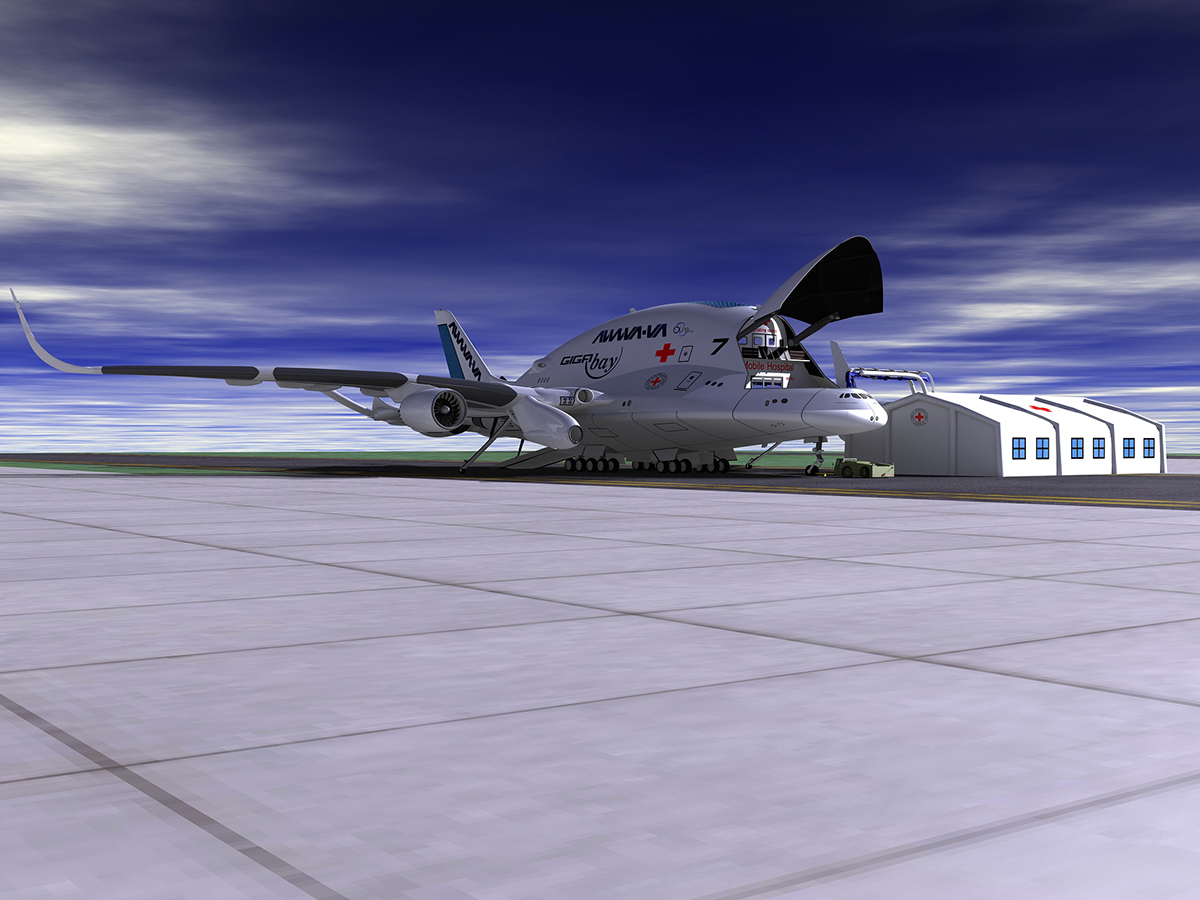
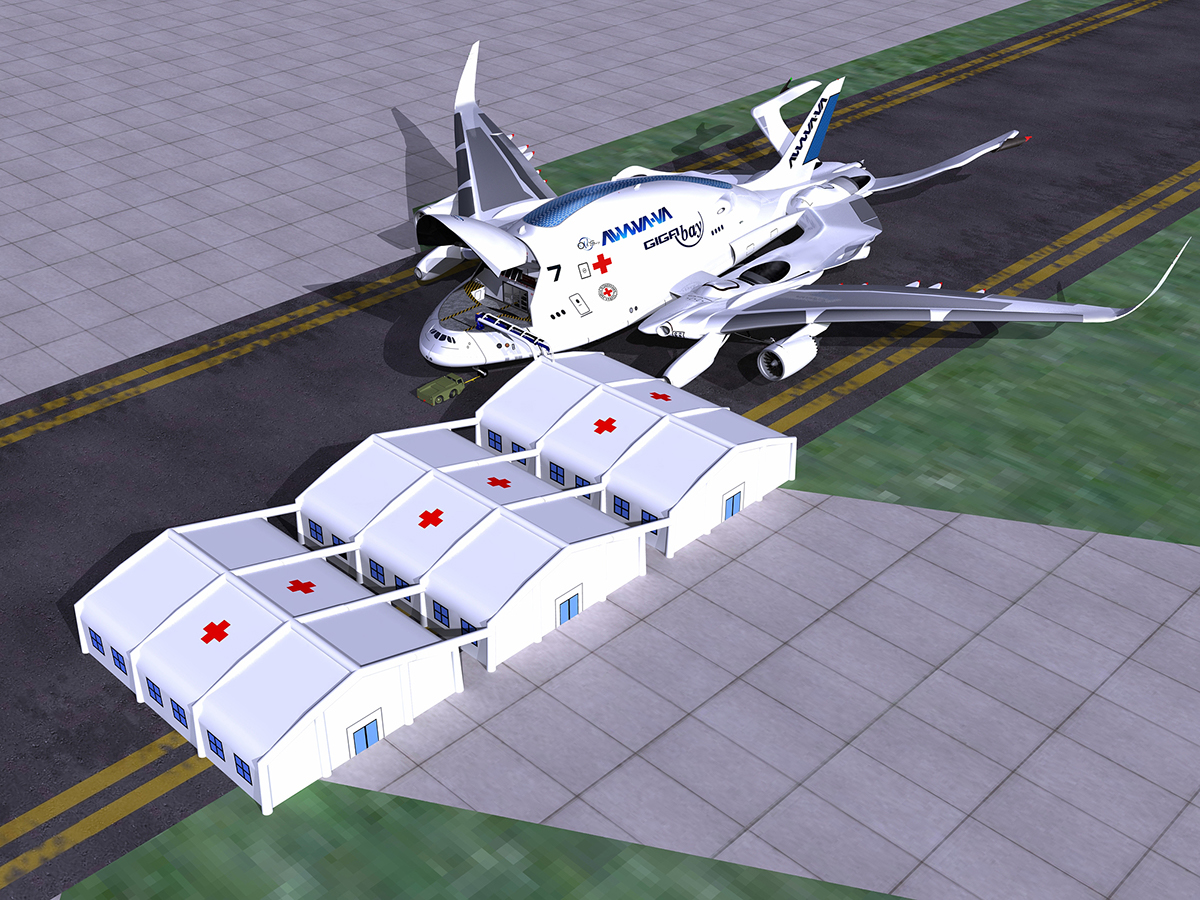
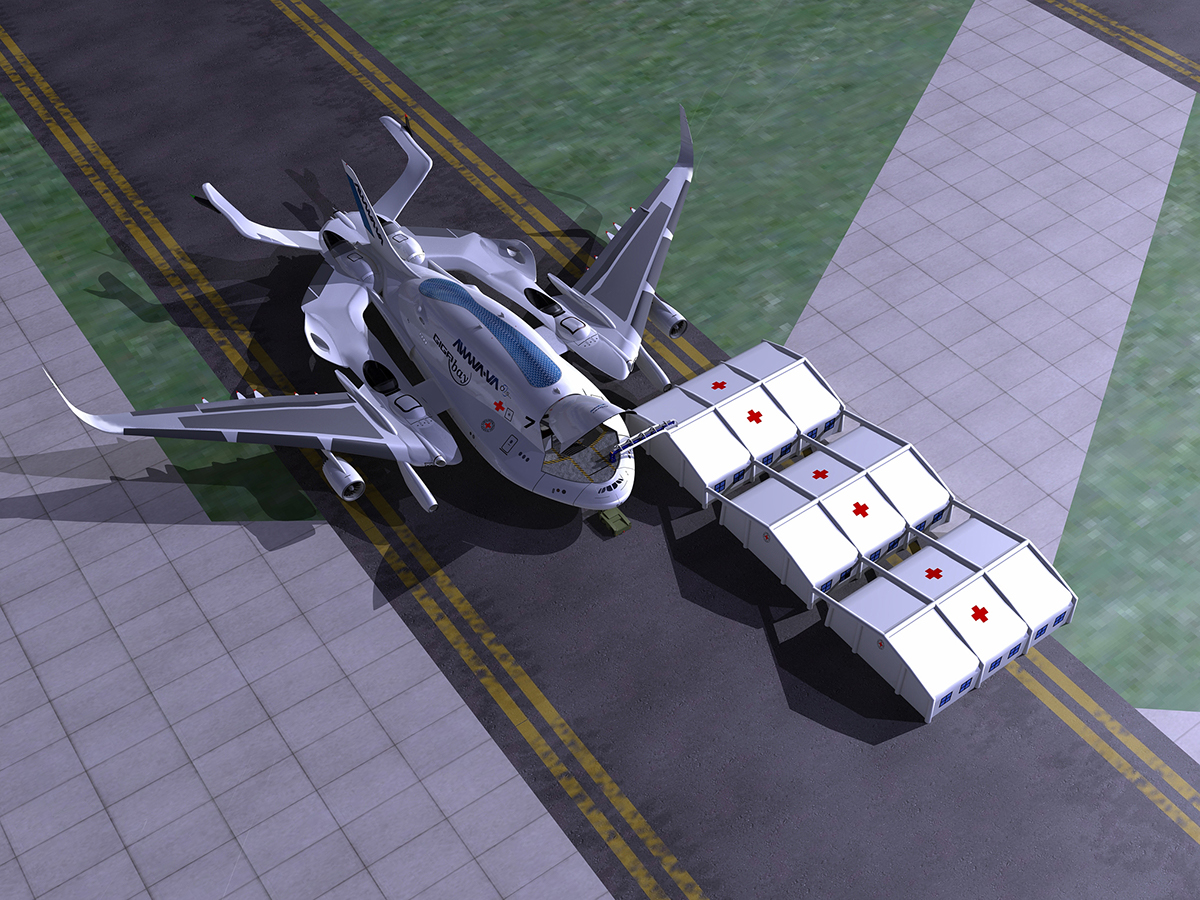
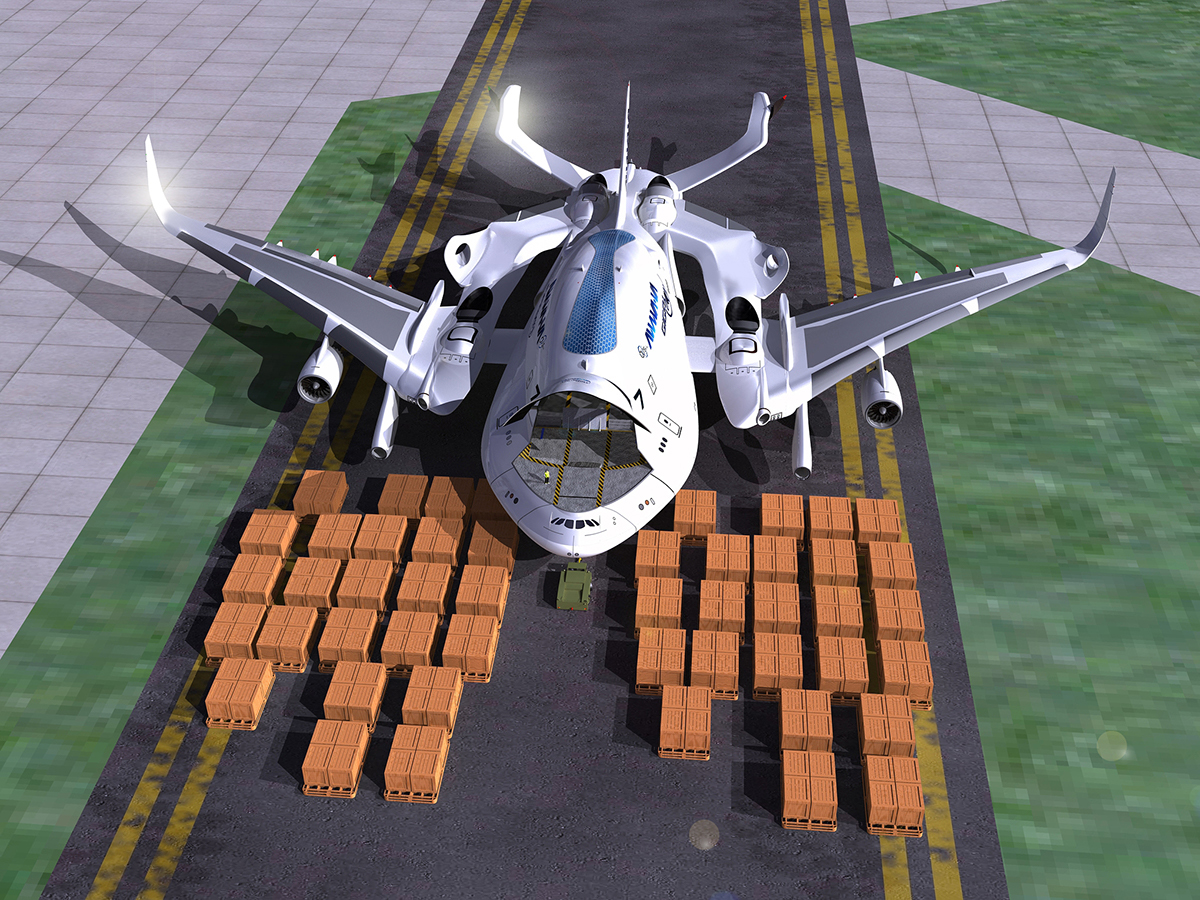

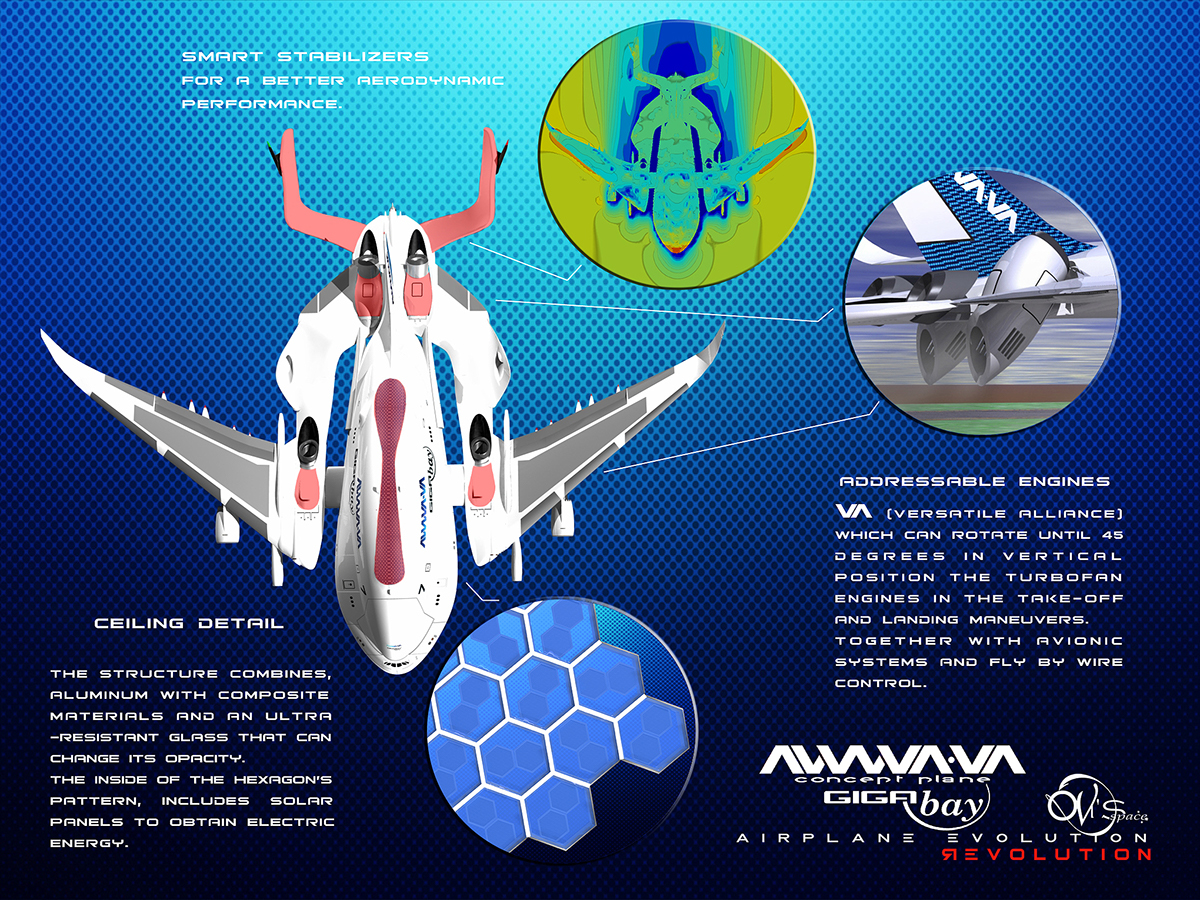
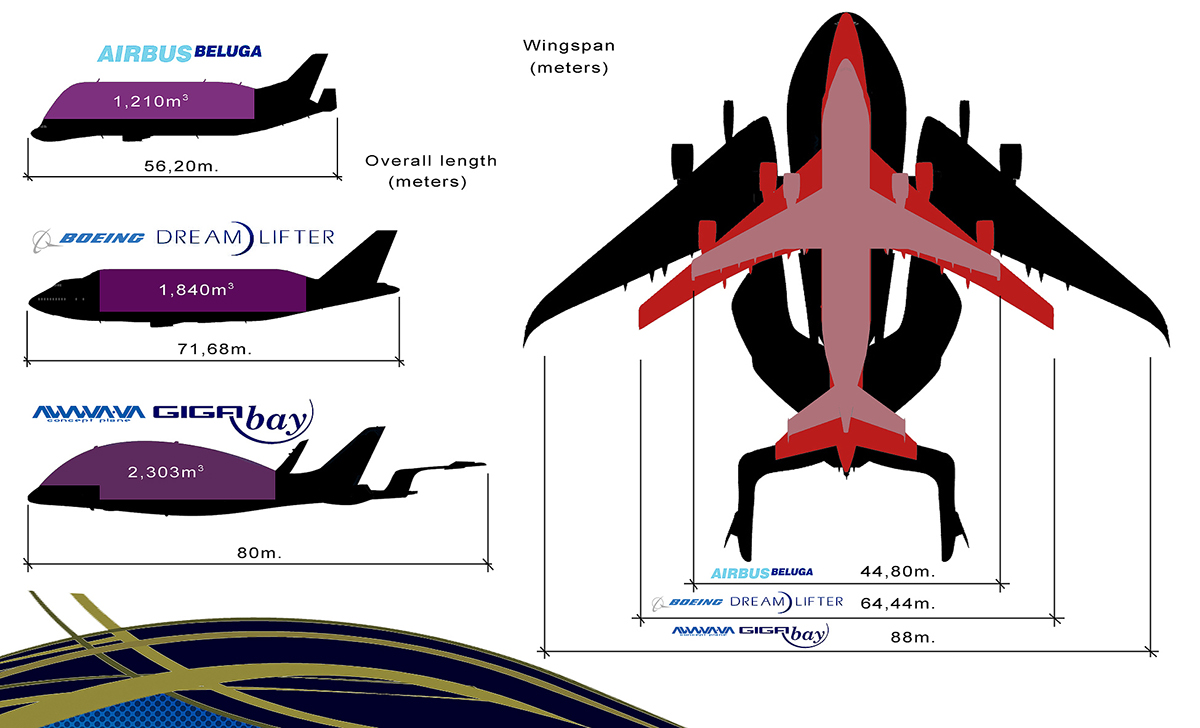
Exercise of design...
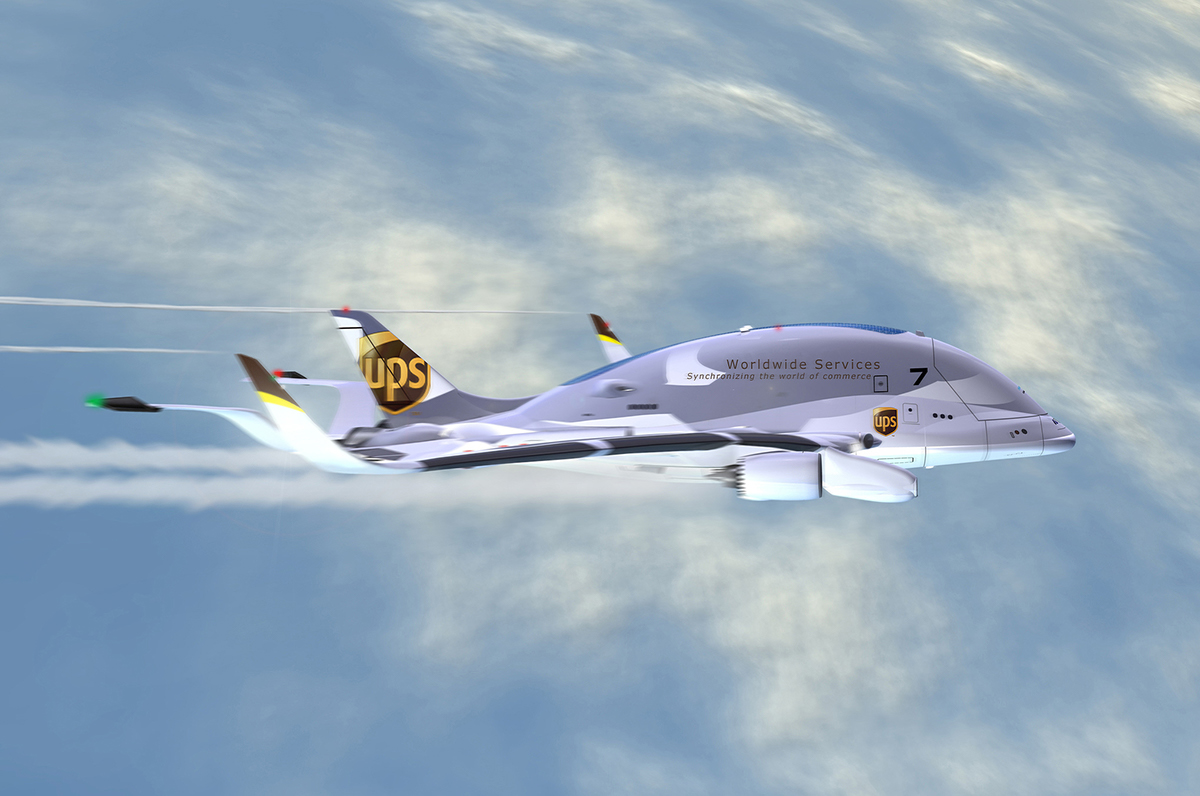
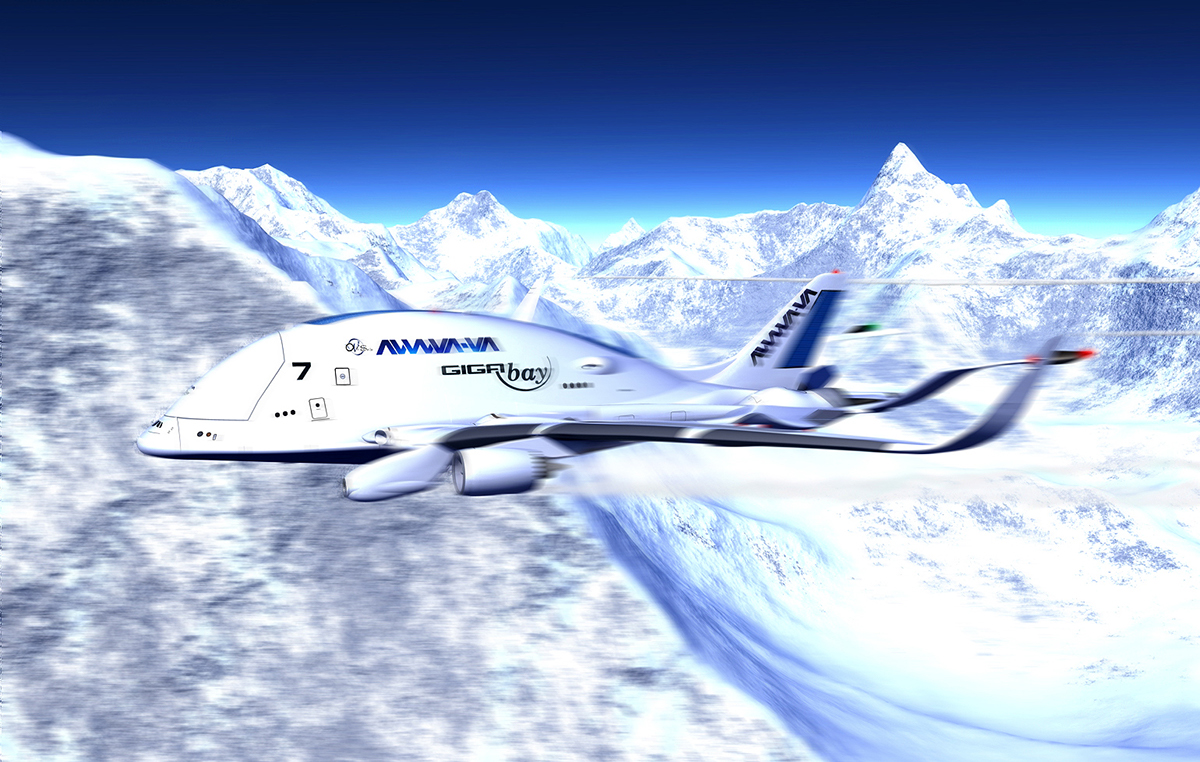

Some Specifications:
Crewmembers: 6
Overall length: 80 meters
Wingspan: 88 meters
Max. cargo: 220 tons
Volume cargo: 2,303 m3
Engines: 4 Hybrid engines & 2 Electric-engines (E-e)
Service ceiling: 13,100 meters (43,100 ft)
Max. speed: 903 km/h - Mach 0,85
Combustible storage: Fuel 15%, Hydrogen 10% & Next-Gen Batteries 75%
Generators: 6 wind units (4 over the wings & 2 on the rear part of the airplane’s fuselage)
Designer: Oscar Viñals
Some interesting aspects of the E-e engines
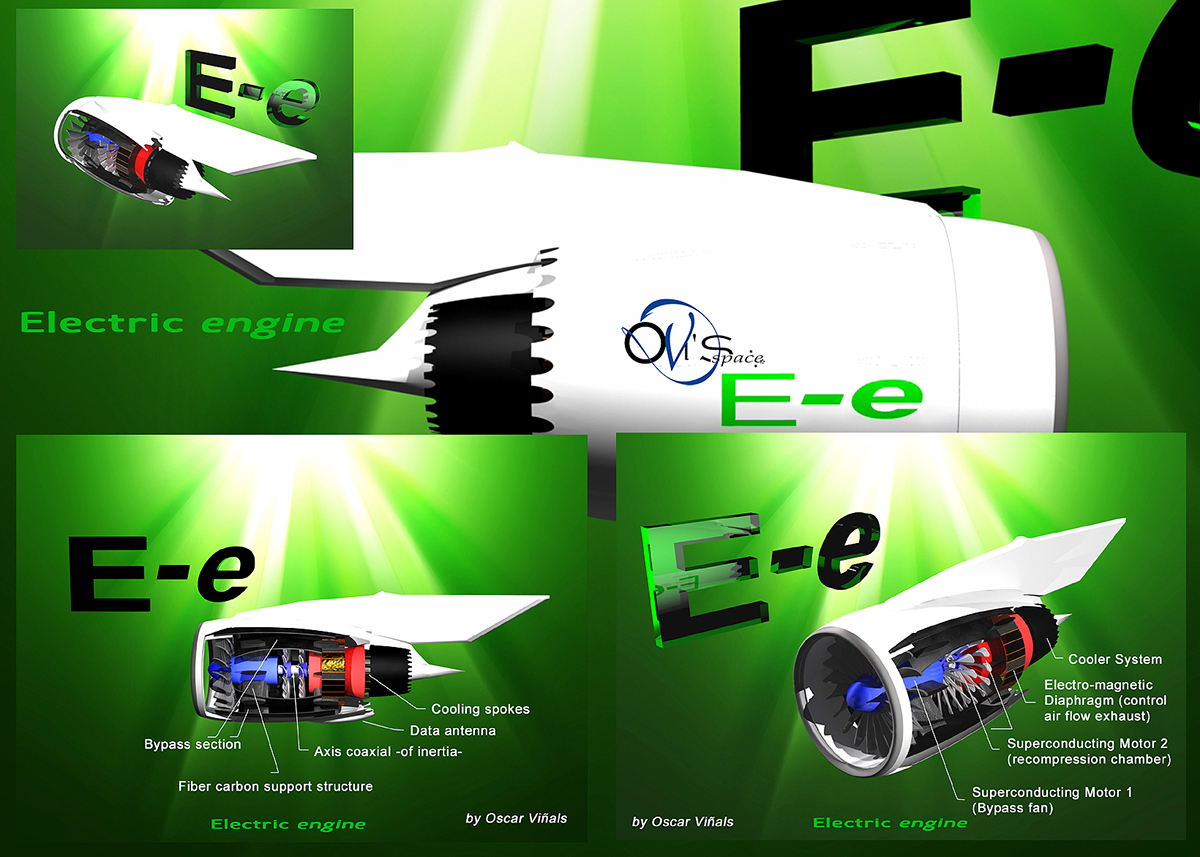
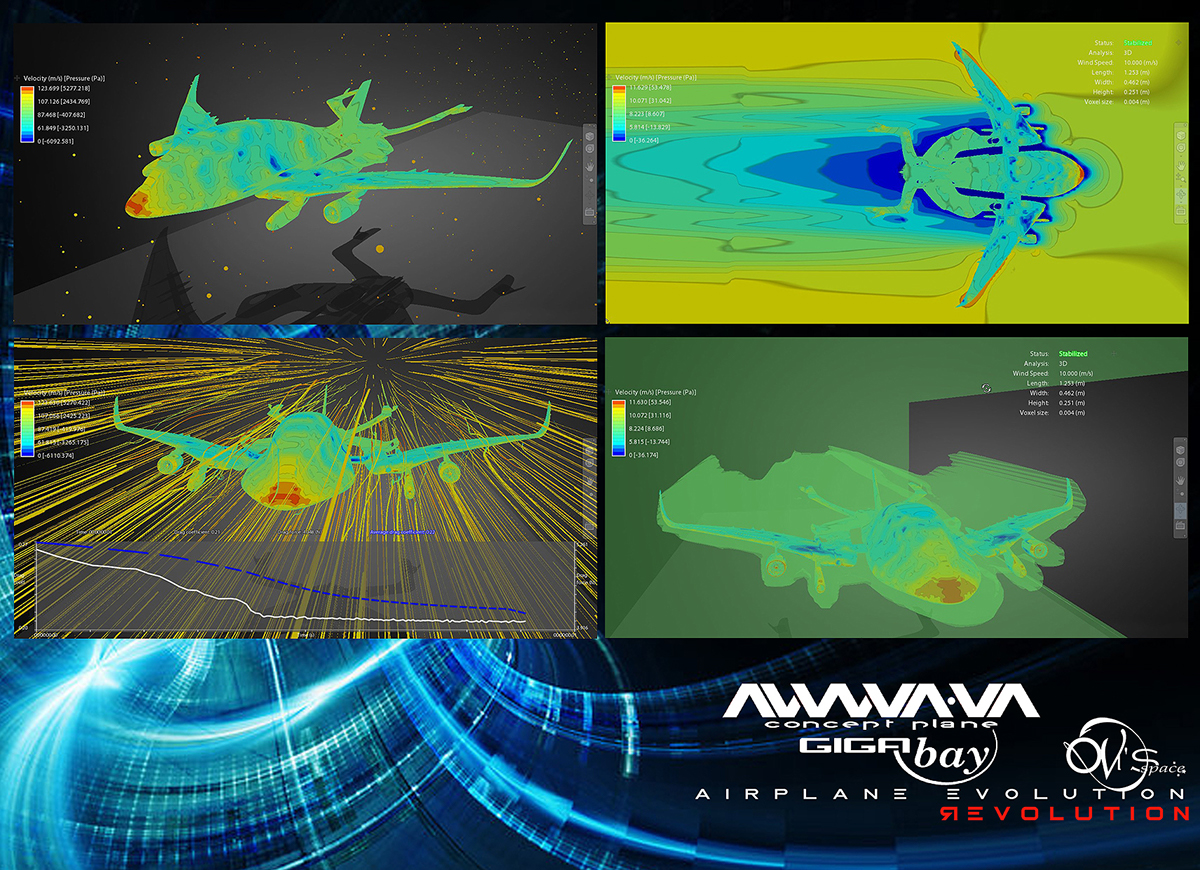

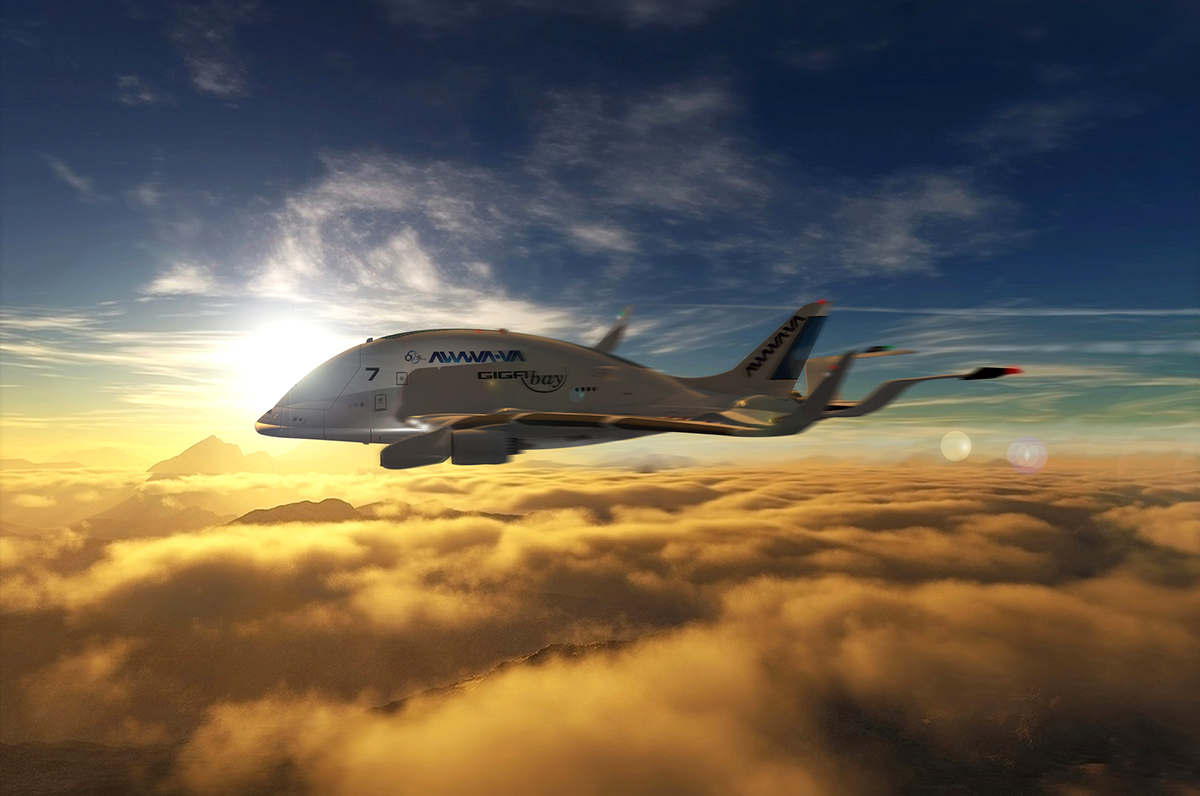
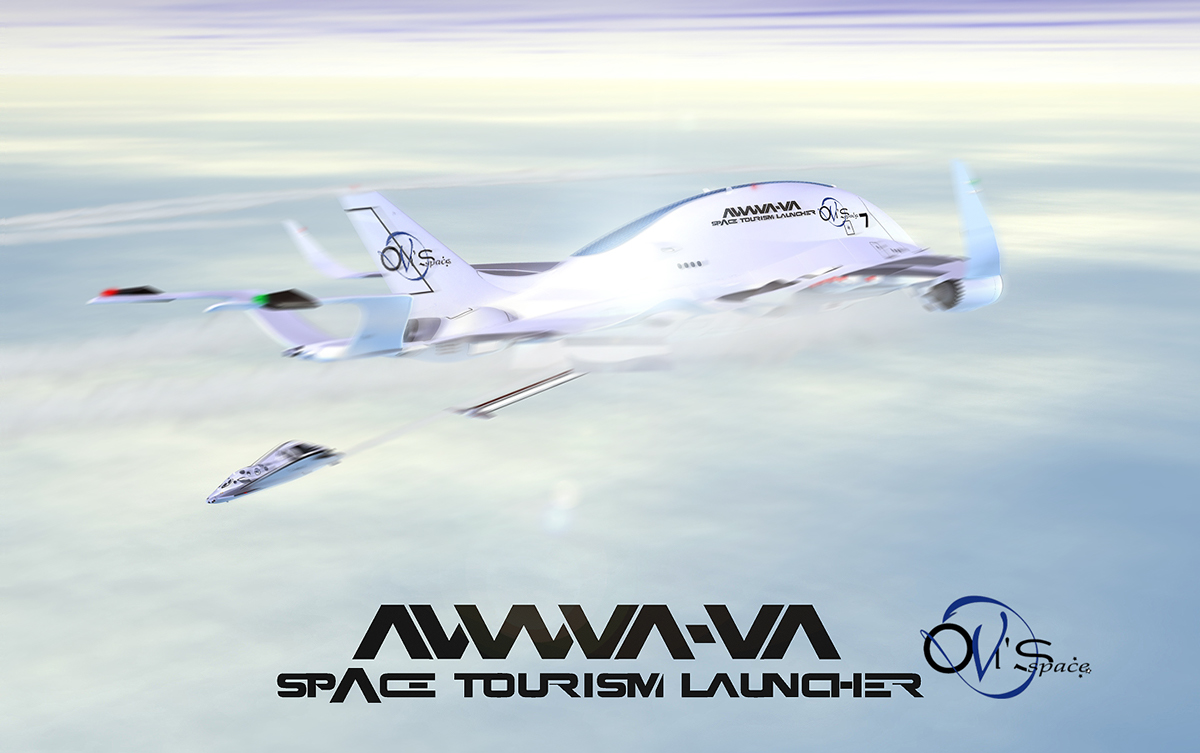
Space Tourism Team


2 0 1 4
